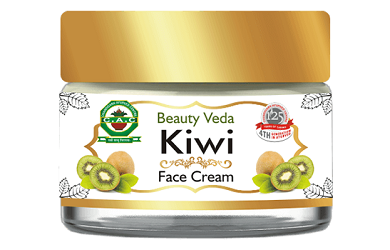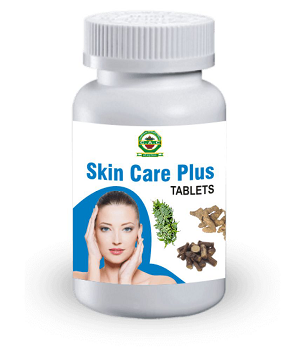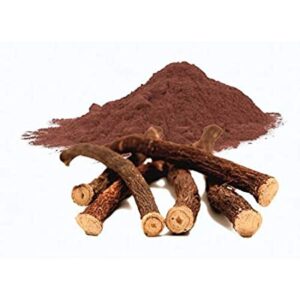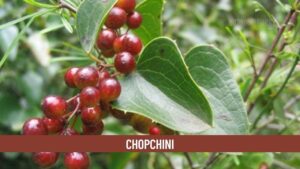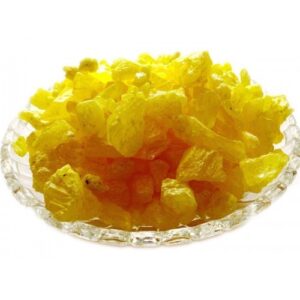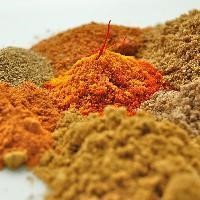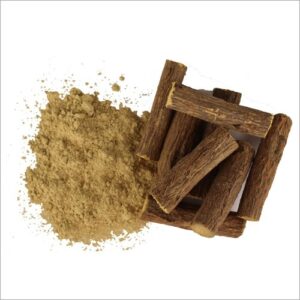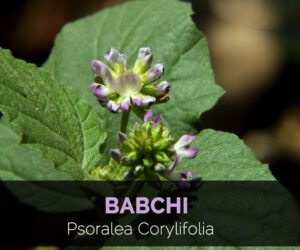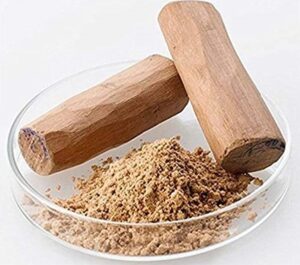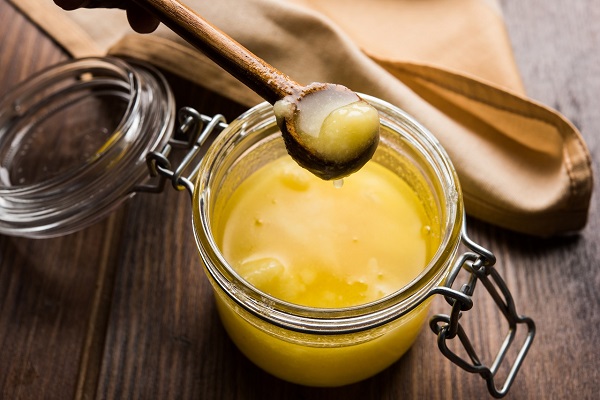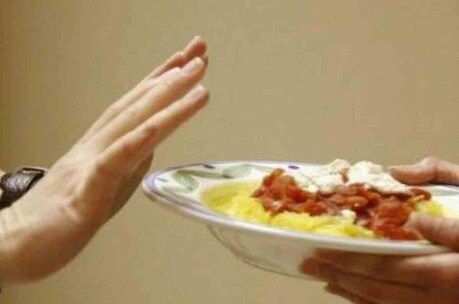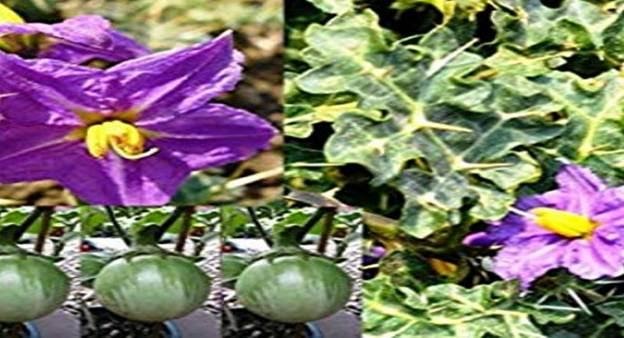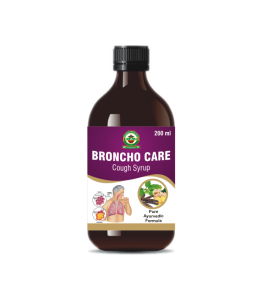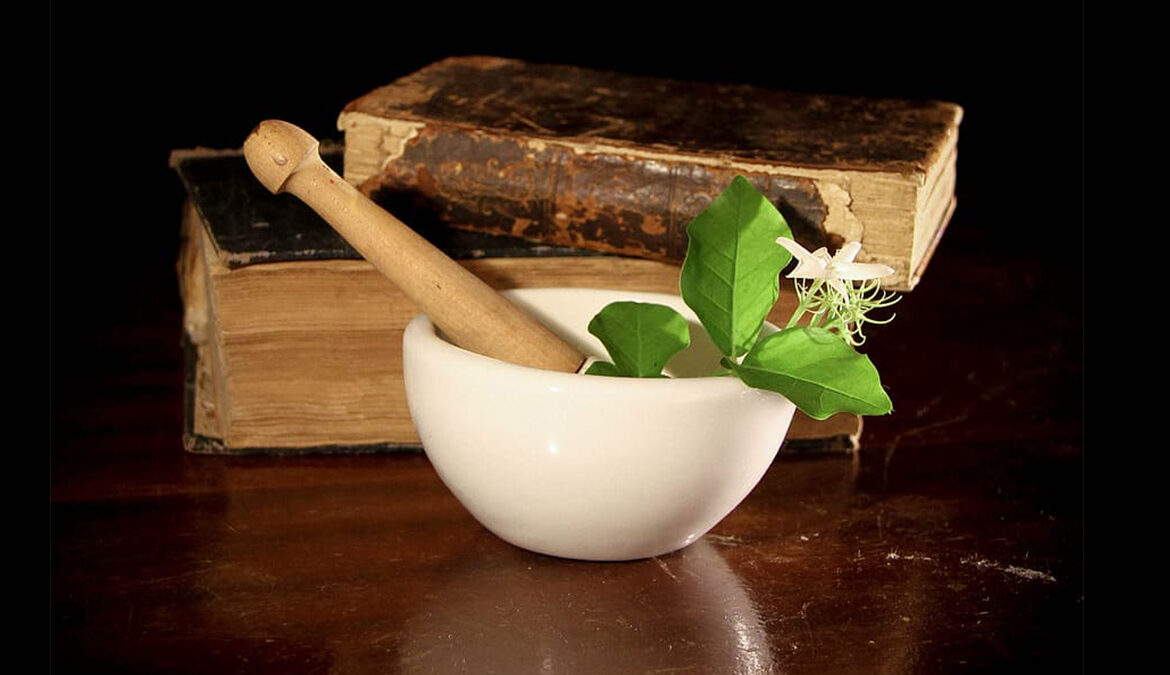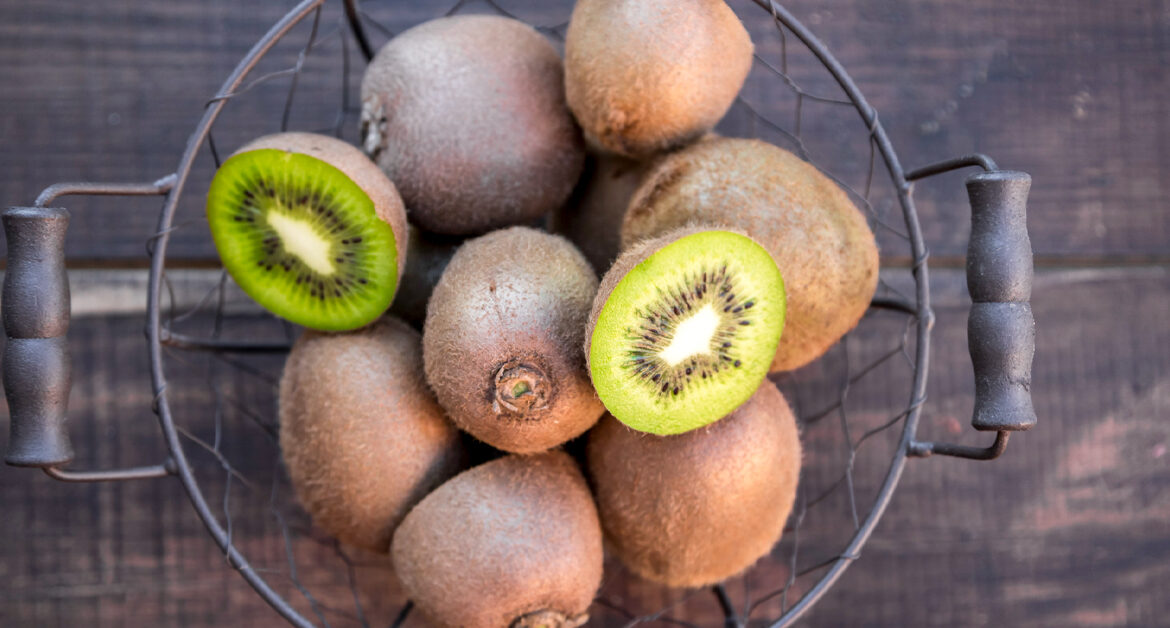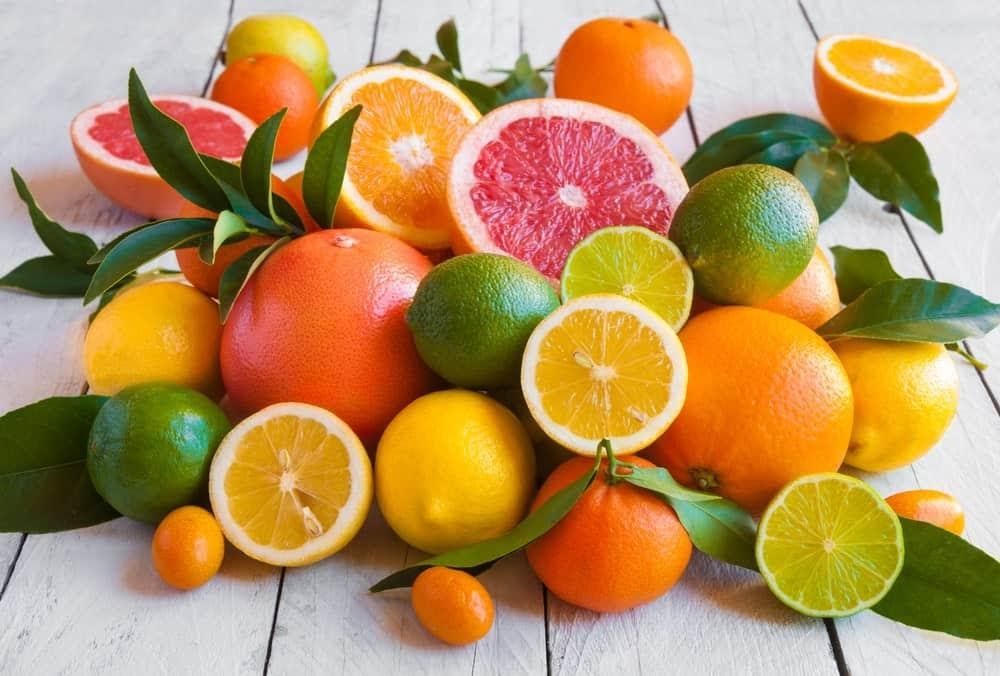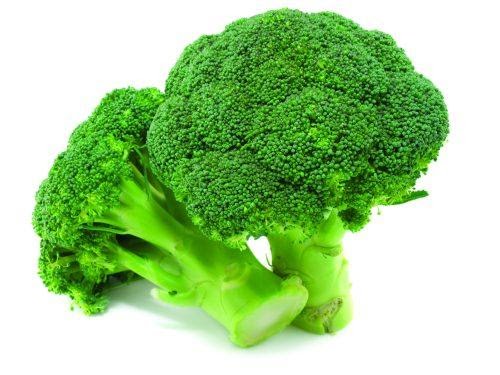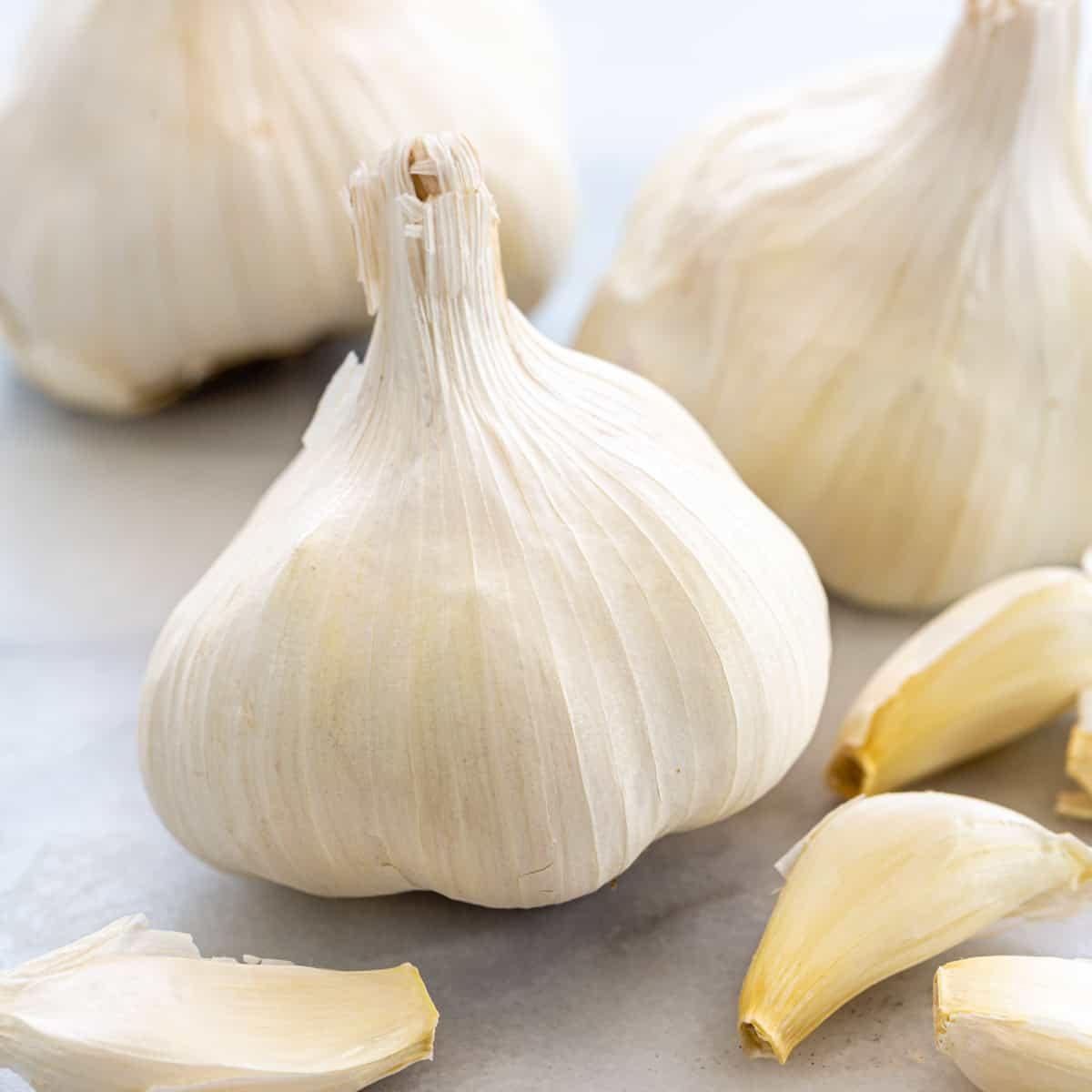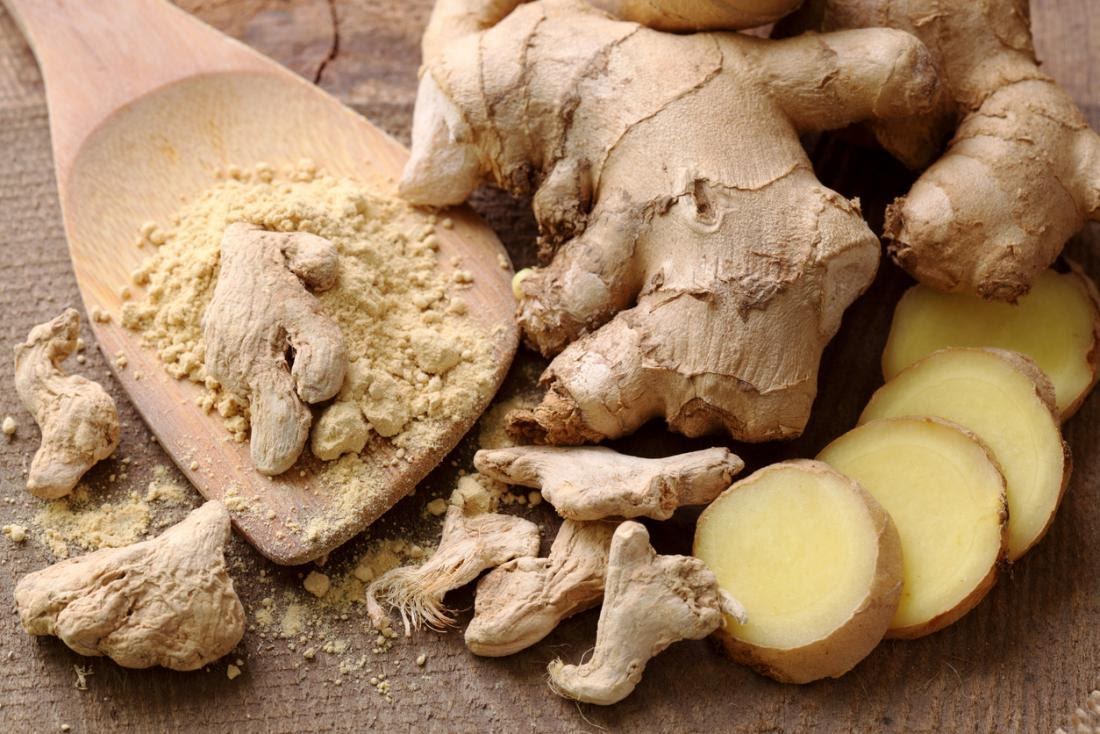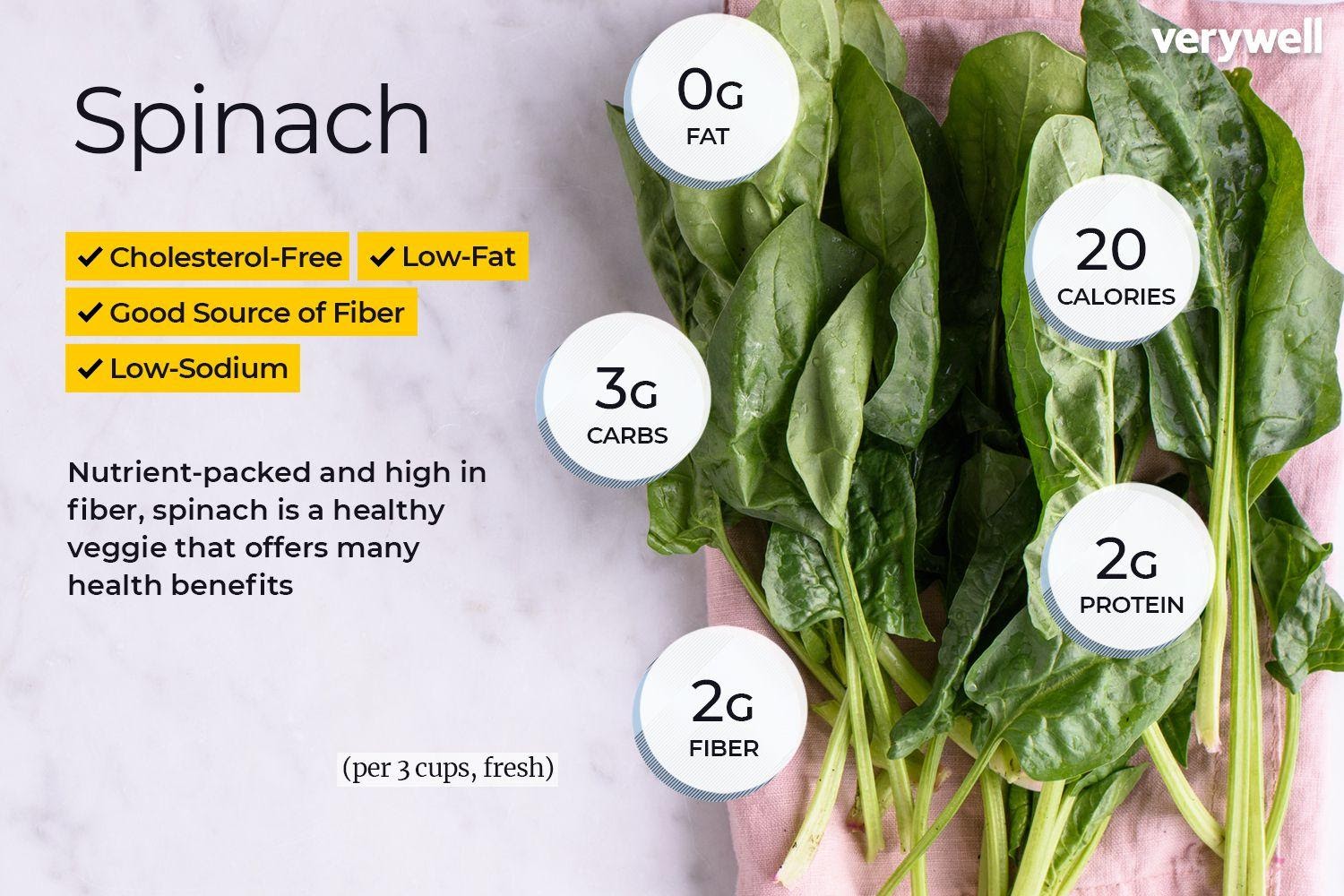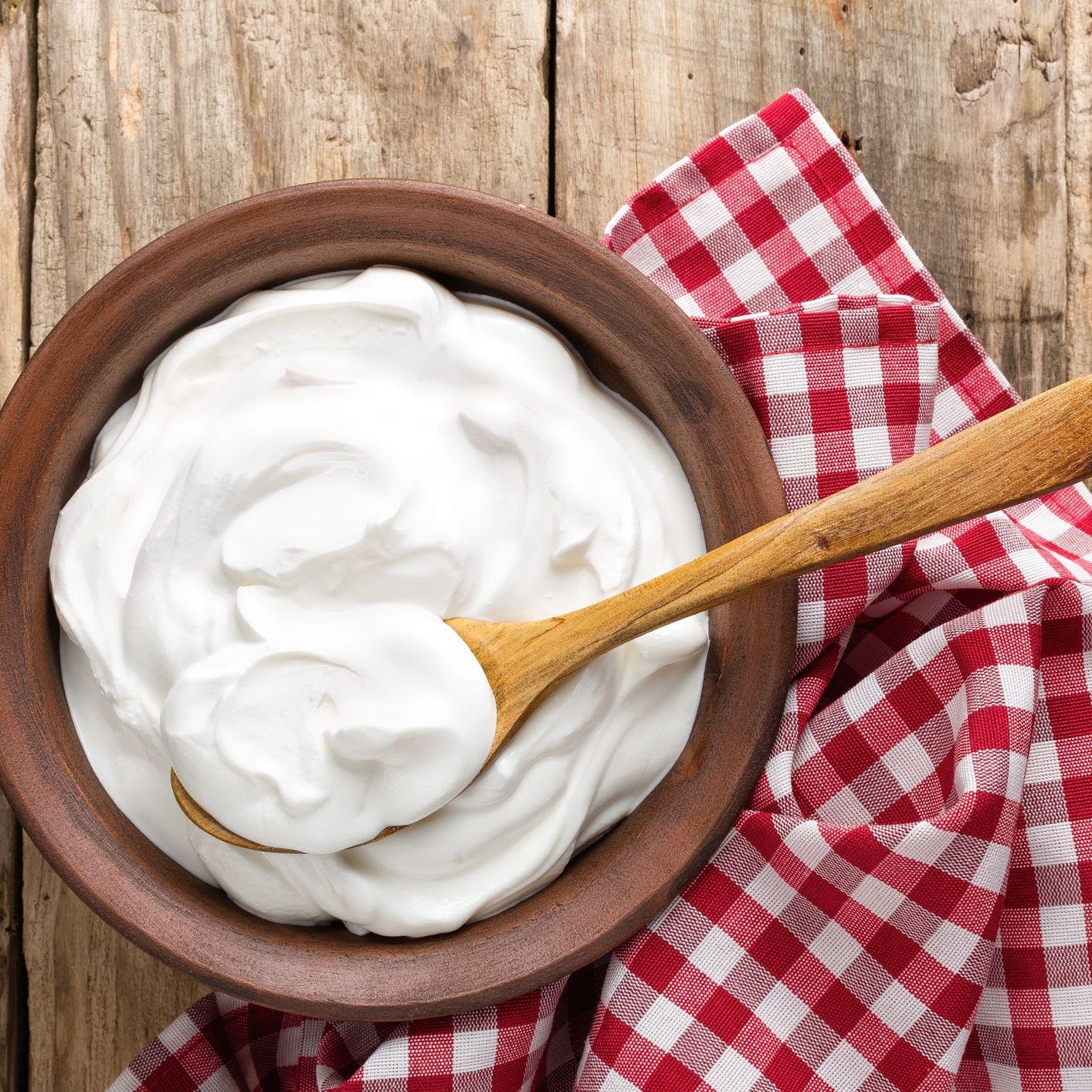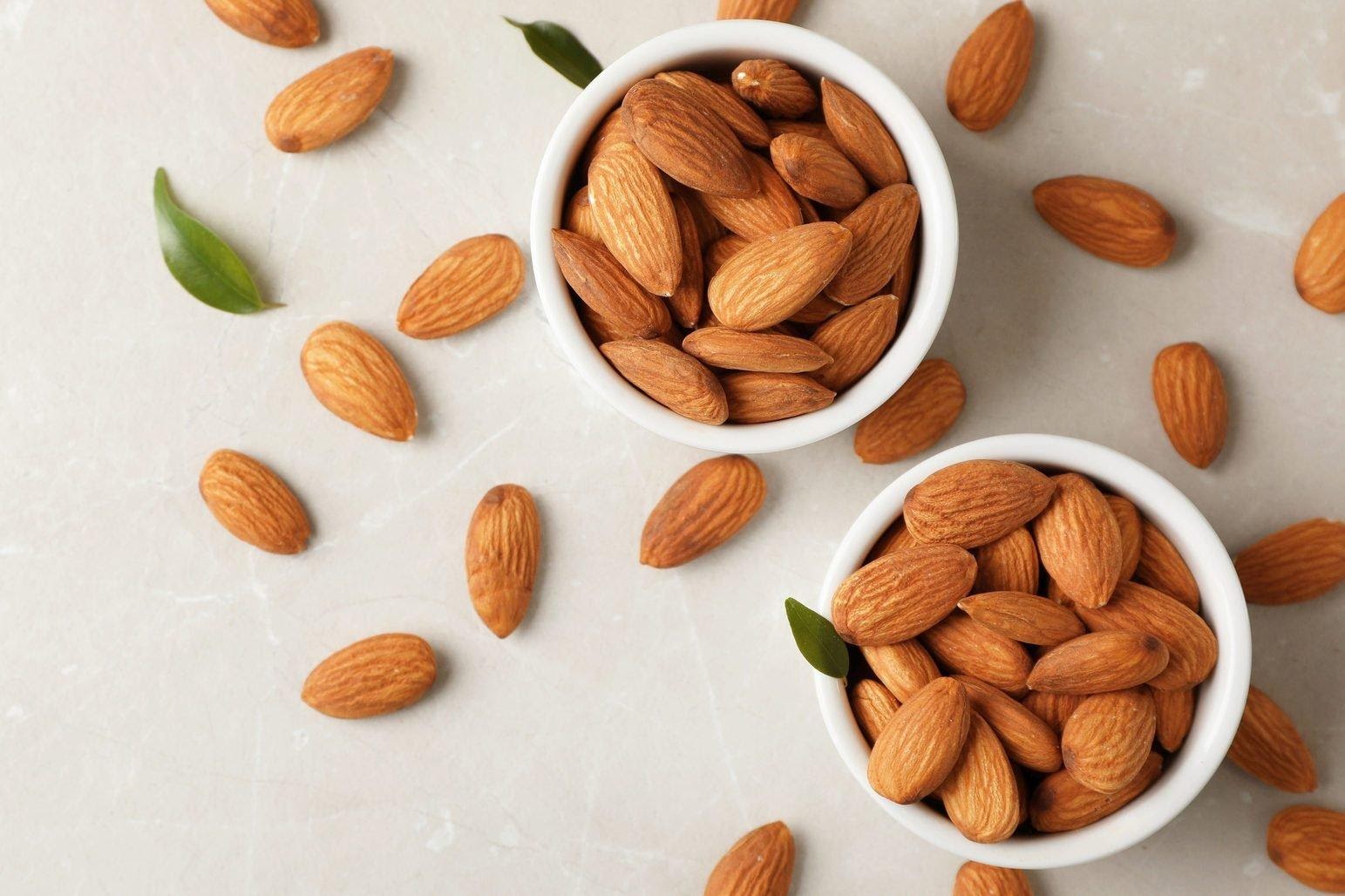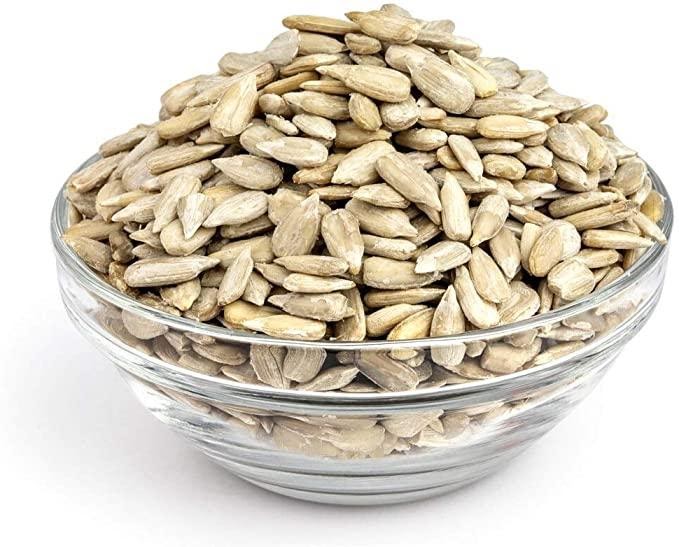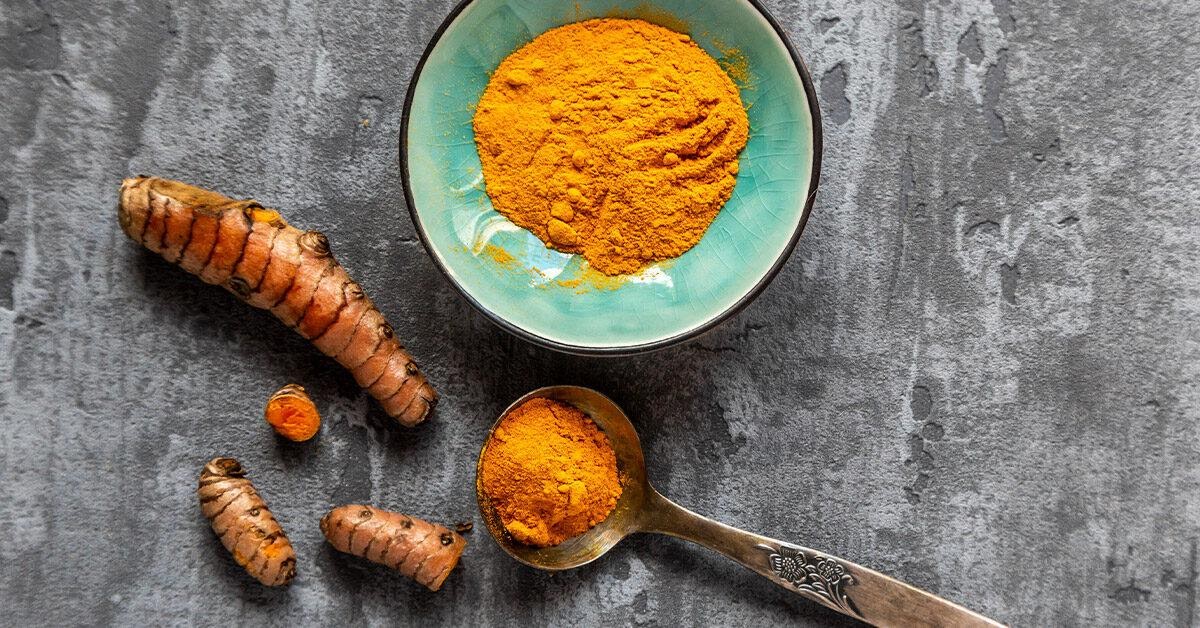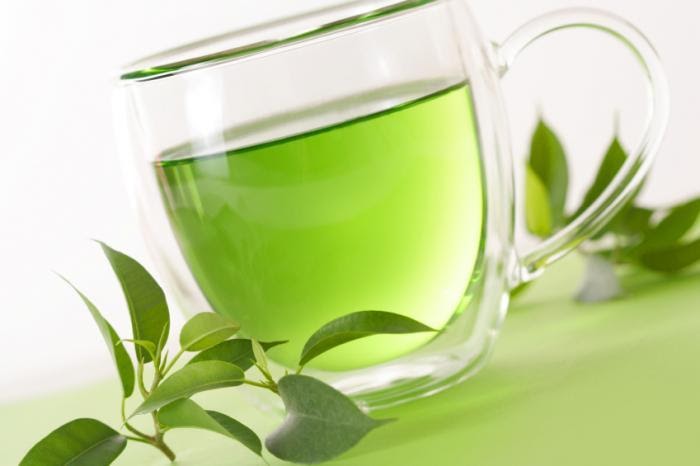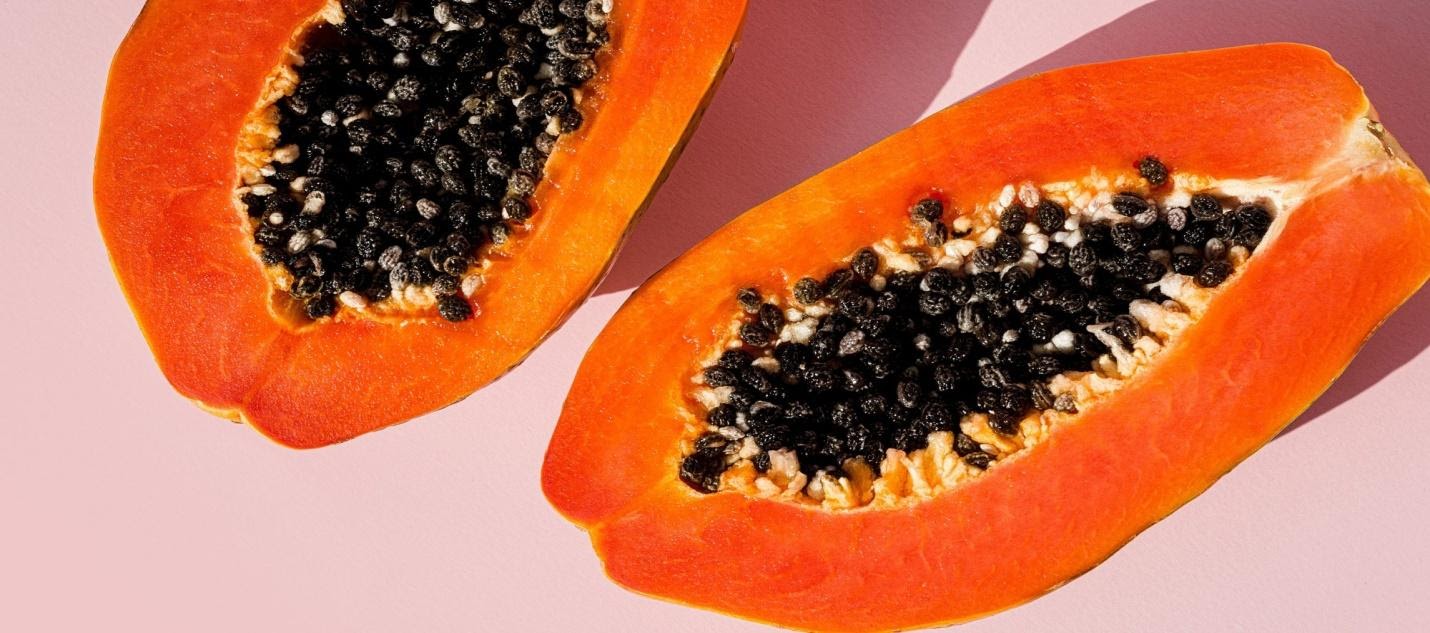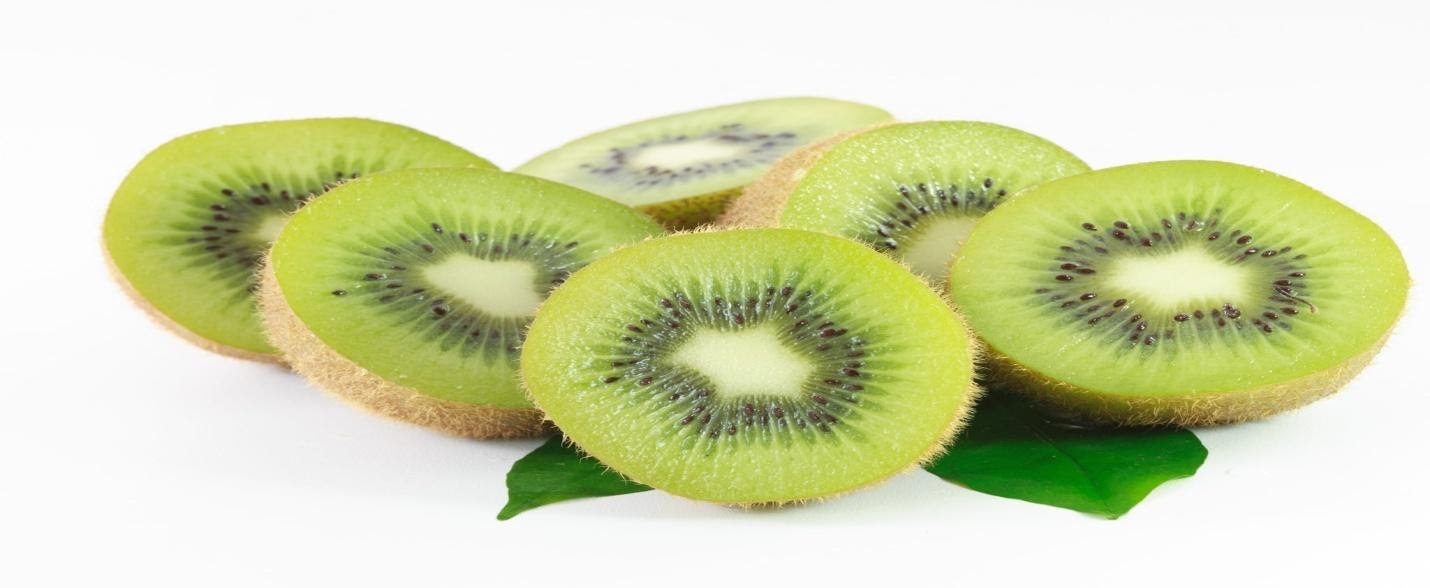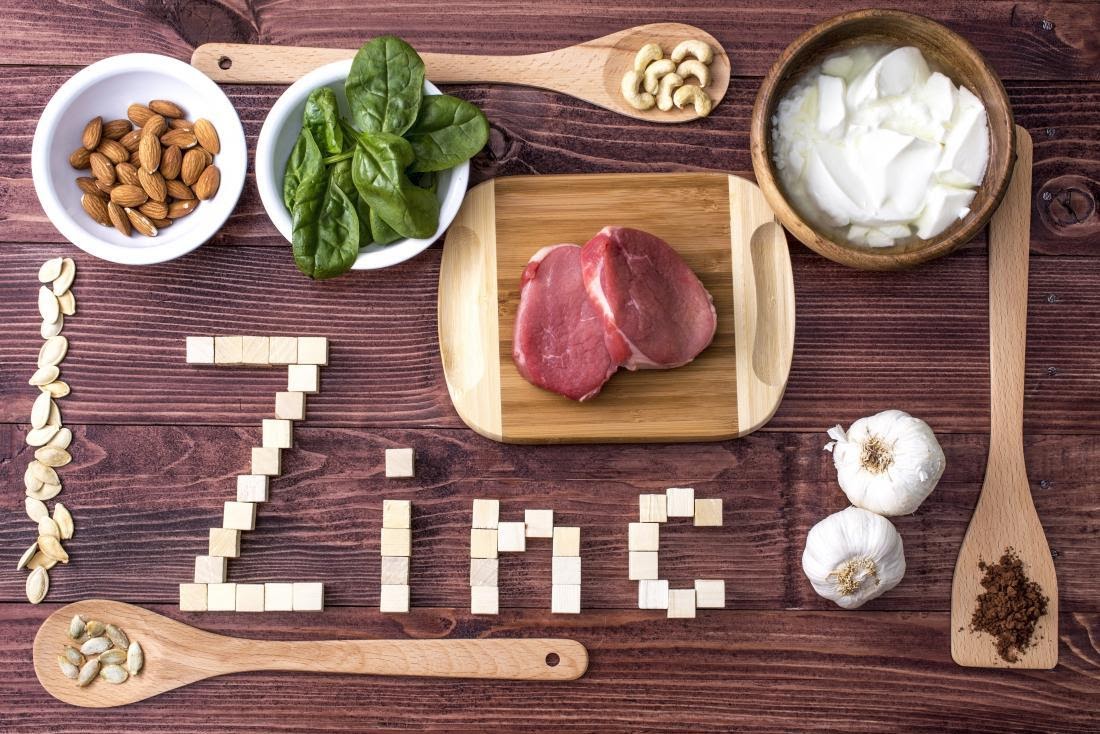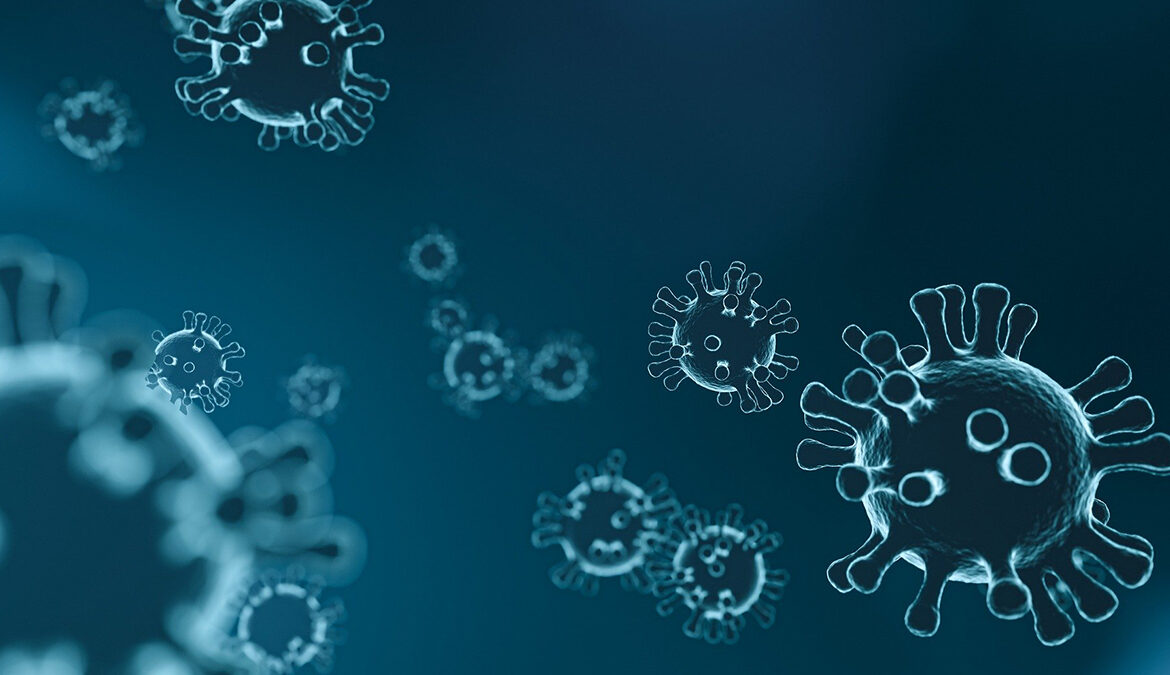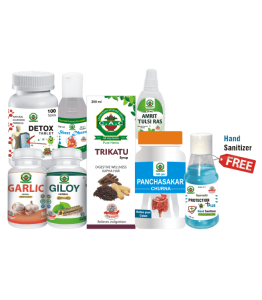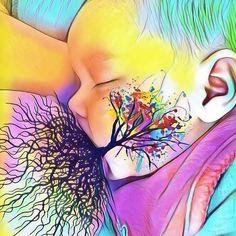Author Archives: Dr. Vaidya Karanvir Singh
Kiwi Face Cream
- May 4, 2021
- Posted by Dr. Vaidya Karanvir Singh
- 0 Comment(s)
Description
CAC Kiwi Face Cream makes your skin look gorgeous, softer, glowing, and healthier for a long duration. Kiwis are rich in antioxidants, fibers, and vitamin C which helps in the exfoliation of the skin, improving the overall texture of your skin, and helps in peeling off acne. Kiwi face cream helps in removing all the impurities leaving a beautiful, healthy, and natural glow. This cream act as an excellent moisturizer, as kiwi contains natural oils. Kiwi contains Antioxidants that fight with free radicals and may help in slowing down the production of wrinkles, and stop premature aging. Vitamin C helps the body to form collagen and elastin which prevent sagging of your skin and your skin looks younger. Daily use of this hydrating and nourishing cream also prevents skin sagging and improves firmness as well.
Ingredients of CAC Kiwi Face Cream
- Kiwi fruit plant extract
- Honey
- Lemon juice
- Wheat germ oil
- Jojoba oil
- Argan oil
Benefits of CAC Kiwi Face Cream
- Makes your skin glowing and radiant
- Moisturizes the face
- Promote cell regeneration
- Makes your skin looks younger
- Prevents sagging of skin
- Reduce wrinkles and fine lines
- Reduces acne spots
- Prevents premature aging of skin cells
- Reduce pigmentation
- Tighten your skin
How to Apply?
After washing your face with a gentle face cleanser, apply small spots of kiwi face cream over your damp face and then even it out all over your face and neck as well.
About Product
Chandigarh Ayurved Centre products are 100 percent safe and natural. Made in India.
- Under the guidance of the MD Ayurveda expert, this product is being formulated.
- Completely natural and herbal products for overall health.
- Free from preservatives and harmful chemicals.
- 131 years of serving mankind through Ayurveda.
- Serving society 4th Generation in Ayurveda.
Skin Care Plus Tablet – 1000 mg
- May 4, 2021
- Posted by Dr. Vaidya Karanvir Singh
- 0 Comment(s)
Ingredients:-
- Manjistha – 200 Mg
- Chopchini – 200 Mg
- Tal Sindoor – 75 Mg
- Gandhak – 150 Mg
- Ras Manikya – 75 Mg
- Yashtimadhu – 100 Mg
- Babchi – 100 Mg
- Swet Chandan – 100 Mg
Ingredients Description
Manjistha:-
Manjistha is an Ayurvedic herb that used to cleanse and purify the blood.
Health Benefits of Manjistha:-
- This used to treat skin problems
- This treats Diarrhea, as it has anti-diarrheal properties
- It has antibacterial properties
- It used to treat intestinal infections
- This is helpful to treat ama atisara
- It reduces the frequency of stools
- This helps to treat dysentery
- This drug fights Respiratory disorders
- It has powerful anti-inflammatory
- It acts as good antibiotics
- It has anti-asthmatic properties
- Manjistha is used to treating common cold, cough, sore throat and flu symptoms
- It has hepatoprotective and hepatostimulative properties
- This improves the functions of liver
- It treats jaundice
- This provides support to the liver functions
- This also detoxifies and cleanses the liver and improves liver functioning
- This helps to weight loss
- This helps to prevent Ulcers like ulcerative colitis, peptic ulcer, canker sores and mouth ulcers
- It used to treat dysmenorrhea during the menstrual cycle
- It helps to treat PCOD in women
- Manjistha is extremely beneficial in treating urolithiasis
- It also help to treat kidney stones and other kidney disorders
- It promotes Cardiac functions
- Manjistha has powerful cardio-tonic properties
- It reduces the risk of atherosclerosis, heart blocks, heart attacks, and blood clots
- It herb has vasodilatory action and it helps to manages high blood pressure
- This drug reduces the risk of cancer or tumors especially ovarian and uterine cancer
- Manjistha supports the lymphatic system
- This drus balances the Pitta (fire and air) doshas and Kapha (earth and water) doshas
- It can aggravate the excess of Vata (air) doshas
Chopchini:-
Chopchini is also known as China root
Health Benefits of Chopchini:-
- Chopchini helps to manage diabetes as it enhancing insulin secretion
- It has antioxidant and anti-inflammatory properties
- This improves digestion and appetite as it has Deepan (appetizer) property
- Chopchini is useful in treating skin problems.
- This helps to manages skin inflammation and allergic reactions as it has anti-histamine and anti-allergic properties
- Chopchini cream applying on the skin helps to manage psoriasis
- It helps to inhibiting the growth of microorganisms due to its anti-psoriatic property
- Chopchini has diuretic properties and it helps to manage fluid retention by increasing urine production
- This is beneficial in Rheumatoid arthritis
- Chopchini has good Vata balancing properties and it gives the relief from the joints problems like pain and swelling in the joints.
Tal Sindhoor:-
Health Benefits Of Tal Sindhoor:-
- Tal Sindhoor helps to treat all types of the skin disorders like eczema, boils, and carbuncles
- It has Sarva Kushtahara properties
- Tal Sindhoor used in many skin problems associated with kandu (itching), vitiated Rakta Dhatu
- This helps to treat fever (jwara, and sannipataja jwara)
- This treats infectious diseases like abscess (vidradhi), and gonorrhea (upadamsha)
- Taal Sindur has blood purifying, antimicrobial activity
- It has antibiotics properties as it fight against P.aeruginosa, E.coli, S.aureus, S.mutans and C.albicans
- It also acts as antiseptic as it has kustha-har properties.
Gandhak:-
Health Benefits of Gandhak:-
- Gandhak Rasayanhelps to treat various types of skin diseases like itching, ringworm, scabies, allergy and fungal infections
- This ayurvedic medicine has powerful anti-bacterial, anti-microbial and anti-viral properties
- Gandhak used to treat a number of skin problems such as psoriasis, scabies, eczema and itching of the skin
- It also used to treat depression
- This helps to treat joints problems like arthritis
- It provides relief from athletic injuries and congestive heart failures disorders
- This used to treat Bladder disorder
- It used in the treatment of intestinal cystitis
- Gandhak used to treat pain syndromes and athletic injuries
Ras Manikya:-
Health Benefits of Ras Manikya:-
- Ras manikya is useful in the treatment of Premature ejaculation
- It used in the treatment of Erectile dysfunctions
- This used to treat infertility
- This drug used to treat respiratory disorders such as asthma, difficulty in breathing, wheezing, coughing, and congestion like problems
- Ras manikya is a good remedies and treatment of anemia
- This is very helpful in all types of skin problems
- This drugs is used to improve sperm production and treat male sexual disorders
- This drug also has anti-microbial properties as it prevent microbial replication by killing microorganisms.
Yashti Madhu:-
Yashti Madhu is also known as Glycyrrhiza glabra.
Health Benefits of Yashti Madhu:-
- Yashti Madhu is very effective in the prevention and treatment of oral mucositis
- It is very helpful in post radiation and chemotheraphy in patients of cancer
- This is helpful in treatment of head and neck region
- This drug is used in respiratory disorders
- It also used to treat digestive Disorders
- Yashti madhu helps to reduces stress and depression
- It helps to controls cholesterol levels in the blood
- This drug helps to boost the immunity
- This helps to keeps liver healthy
- This drug helps to treat many types of skin disorders
- It helps in weight management
- This drug treats cold, cough and sore throat
Babchi:-
Health Benefits of Babchi:-
- Babchi drug is very good for preventing the risk of cancer
- This drug also helps to treat various types of cancer in the body
- This helps to slowdown the growth of lung cancer cells and osteosarcoma
- Babchi contains the Antioxidant helps in fighting against free radicals
- This prevents from various types of cancer, such as colon cancer, or prostate cancers
- Babchi oil helps to improve the reproductive system in both men and women
- It has natural aphrodisiac properties
- Babchi is one of excellent tonic for the body
- Babchi prevents the respiratory disorders
- Babchi has anti-inflammatory properties
- It has anti-bactrerial properties also
- Babchi has anti-inflammatory properties as it is very beneficial to reduce the inflammation of the respiratory system
- This helps to keep the respiratory system healthy
- This also protects our respiratory system from infections caused by virus and bacteria
- This helps to treat various diseases such as the common cold, bronchitis, and flu
- Babchi drug Improves the skin health
- Babchi prevents various types of skin disorders such as, eczema, dermatitis, boils, skin eruptions, scabies, vitiligo, leucoderma, and ringworm
- This drug helps to treat various types of skin bacterial infection, like acne, and sore
- Babchi improves oral health
- It helps to relieve painin the case of toothaches and gum problems
- Babchi improve the circulation of the blood and reduce the strain on the blood vessels
- It also prevents various types of heart problem like heart attack, and heart stroke
- It also helps to reduce chronic muscle strain and arthritis like problems
Swet Chandan:-
Health Benefits of Swet Chandan:-
- This drug helps to treat Urinary tract infections (UTIs)
- This treats Common cold
- It treats Cough
- It is beneficial in Bronchitis
- It treats Fevers
- This treats throat infections and Sore mouth
- It gave relief in headache
- This drug prevents Heatstroke and heart attacks
- This treats Liver and gallbladder problems
COW GHEE BENEFITS
- April 29, 2021
- Posted by Dr. Vaidya Karanvir Singh
- 0 Comment(s)
DESCRIPTION
- Since ancient times, the importance of ghee cannot be emphasized in Indian culture.
- Traditionally pure ghee is made from cow’s milk and is considered to be a powerhouse. It is using in food to enhance the taste, and used in lighting mud lamps or diyas and performing auspicious rituals.
- Ghee is used everywhere in India. It is in the form of clarified butter and has a high smoke point which makes it good for cooking.
- Ghee contains cholesterol and fatty acids which act as healing agents for the body. It is also used to moisturize during winters.
- According to Ayurveda, ghee is a vital nourishing natural ingredient for the body and is considered to be positive food or satvik.
- These easily digestible fats balance heat elements in the body.
GHEE BENEFITS
Benefits of ghee for hairs
- Ghee contains high moisturizing and nourishing properties that give you smooth, shiny, and stronger hair.
- Hydrates the hair – Lack of moisture is the major cause of dull, dry, and damaged hairs. The healthy and rich fatty acids present in ghee nourish scalp and hair follicles, boost hydration, and restoring hair health.
- Improves hair texture – Applying ghee onto the hair and scalp can improve hair texture with extra smoothness and shine. Heat spoonful ghee, dip fingers into it, and rub gently on scalp and hair. Let it for a few hours and wash with shampoo.
- Works as a deep conditioner – People can apply ghee overnight for a deep conditioning treatment for the hairs, and sealed with a shower cap in order to avoid the greasy mess.
- Promotes hair growth – Hair massage with warmed ghee will stimulate the blood circulation in the scalp also promote hair growth and making your hair thicker and longer.
Ghee benefits for skin
- For dark circles – Apply ghee on your eyelids and under eyes every night before sleeping and wash it the next morning with normal water to help to reduce dark circles.
- For chapped and dark lips – Take a few drops of ghee and gently massage over your lips. Leave it overnight and in the morning your lips become soft and rosy.
- For dry skin – Heat ghee and apply it to your body before bath for soft and smooth skin. In dry face mix ghee with water and massage it into the skin. Wash after 15 minutes with normal water.
- For dull skin – Take ghee with raw milk and besan in the bowel to make a paste. Apply this pack over your face and neck and leave it after 20 minutes before washing.
Cow ghee benefits for brain
- Ghee in the diet helps in the growth of the fetus in the mother’s womb – pregnant women have prescribed ghee in their diet because of some natural health benefits.
- Consume Ghee in your diet daily provide some health benefits for the carrying mother, and helps in the proper development of the fetus.
- In Ayurveda, it is said that the ghee diet for a carrying mother gives nourishment and helpful for the baby in the womb.
Ghee in the diet is beneficial for students and seniors –
- It was generally approved that students have to be given ghee based diet and help in:
- Increasing the level of concentration power
- Better power of memorization
- Natural prevention from dementia of seniors
- Better analytic ability, which will help in managing the study, etc.
- Add Ghee to a daily diet is the best way to offer dairy nutrition to the body and enhance the mental ability of a person. Cow ghee is considered the best option for ghee consumers.
- Ghee offers health benefits for people of all ages.
- Cow ghee benefits for the brain are not only for kids and seniors, it is helpful for people at their young age.
- Ghee stimulated stamina level, make mood happy, increase memory power and superior level of intelligence, etc.
For Clogged Nose
- People who suffer from breathing issues, those whose taste sense is hampered, headache, for those people Ayurveda made an interesting nasal drop that may help in soothe clogged nose.
- In Ayurveda, it is called Nasaya. In this process pouring a few drops of lukewarm cow ghee into the nostrils and give instant relief after pouring as the ghee travels all the way down to the throat and soothes the infection. Only pour lukewarm ghee in each nostril.
Good Source of Energy
- Ghee is a good source of energy.
- It contains medium and short-chain fatty acids, “of which, lauric acid is a potent antimicrobial and antifungal in action.
- Lactating mothers are often given ladoos in this period loaded with ghee and provide energy. Pinni is a Punjabi treat, not known for its taste but also has energy-boosting properties.
Keeps Constipation at Bay
- A mixture of milk and ghee works as laxatives and the best remedy for constipation.
- Take 1 or 2 teaspoonful’s of ghee in a cup of hot milk at bedtime is an effective but gentle means of relieving constipation.
Upawaas(FASTING)
- April 29, 2021
- Posted by Dr. Vaidya Karanvir Singh
- 0 Comment(s)
Fasting is a part of the Indian culture. It is also related to our religion. There are ten consumption treatments are awakened in Ayurveda and upwaasa is one of them. Ayurveda guides three therapies for the wellbeing and good health i. e. spiritual, psychological and physical. Many experts believe that fasting (upwaasa) is mixture of all these three. Fasting encourages digestive fire. As per Ashtang hridiya, intermittent fasting is not only an eating sobriety, its pattern of consumption. It’s a method for planning meals to get the most advantageous health impact out of them The whole purpose of eating is for the food to absorbed by your body in form of saar (nutrition) or excrete from the body in the form kitta (stool, urine, sweat).
INTRODUCTION-
The Sanskrit word for fasting is ‘Upawaasa’.
“Upa” means “Near”
“‘Vasa” means “to stay”.
In Ayurveda, Upavasa is one among all Daivavyapashraya (spiritual) therapies and one among ten Langhana therapies. Langhana produces lightness of the body. Fasting (Upawaasa) is defined as “to give rest to digestive system”.
As per ayurvedic aspect a quarter your stomach should be filled with liquids and half with solid food, and a quarter left empty. You should end the food feeling satisfied but not full.
Purpose of fasting-
A poor digestive juice leads to poor health and a strong digestive juice facilitates good health. According to Ayurveda jathragni play a key role in digestion. Agni helps us drink in nutrients from the food we eat. Fasting’s other role is to excrete out waste products that build up in our cells and tissues. Forasmuch, for well-ordered cleaning of the digestive system and minimizing the production of ama (toxins) in the body, episodic fasting is advised.
The idea of a regular fast is to give your Agni (digestive system) a rest. Fasting also gives the great chance for Agni to burn up any toxins, or Ama, that has built up in your body.
Health Improvement By Fasting-
Intensity of fire is reduced by the ash particles remaining on it, due to which it interrupts the process of burning. When the fire of Agni is diminished, we have low nutrition coming into our body, and poor elimination of waste. This can lead to low immunity, lack of energy and weakness. Fasting helps to your overall health and reignites your digestive fire (Agni) and hereby it improves your overall health.
Fasting maintains the strength of digestive system and cleanses the intestine. On the day of fasting, food such as light vegetable soup and fruits can be eaten. In addition, drink lots of liquid including juices, milk, herbal tea, and water with lemon and mint (pudina) leaves.
Upawaasa As A Treatment In Ayurveda-
In Ayurveda, upavasa (fasting) is indicated as a treatment therapy in various diseases. Such as chhardi (vomiting), Atisara (diarrhoea), Visuchika (cholera), hridroga (cardiac disorders), Alaska (paresis of bowel), Jwara (fever).
Upavasa in Raktajaroga-
Upavasa is indicated for curing diseases due to the vitiation of blood (shonita). Pitta (biological factor responsible for digestion & metabolism, color complexion, vision etc.). Therefore, in the beginning, the patient should be kept on fasting
Upavasa in JwaraRoga –
There are ten types of langhana described in chraka samhinta. In the first stage of jwara (Fever), langhana or fasting is prescribed. in the beginning of five days of jwara (Fever) are destroyed by fasting therapy. All these ten types are not useful in the present context, it is only fasting type of langhana which i
Upavasa in Alasaka and Visuchika-
The patients suffering from Alasaka (choleric diarrhea) and Visuchika(intestional torper) should be kept on fasting.
Highlights-
- Fasting doesn’t mean you go through the day without eating.
- The food you eat should be either absorbed by your body in form of ahara rasa
- Or excrete from the body in form of malas.
- Meals should be eaten at the fixed time every day, around every five hours.
- Skipping meals aggravates pitta and consistently under-eating aggravates vata.
- Frequent hunger weakens the dhatus and destroys your body.
- Ayurveda states spring (Shishira ritu) is more suitable time for fasting.
- Ayurveda advise that something which is easy for digestion should be consumed like fresh prepared rice gruel after fasting.
Triphala can help your fasting regime-
Triphala cantains amlaki, haritaki and vibhitaki will help you any fasting (upawaas) you select by making the elimination of toxic (Ama) waste from the body more dexterous and more effective. It also especially cleanses the elementary canal. Triphala is a rasayan or rejuvenator for the digestion.
“CHIKITSATAM VYADHIKARAM PATHYAM SADHARANAM AUSHADAM
PRAYSHITAM PRAKRITISTHAPANPRASHANAM ITAMAN.”
KANTKARI
- April 29, 2021
- Posted by Dr. Vaidya Karanvir Singh
- 0 Comment(s)
DEFINITION:-
Kantkari is an Ayurvedic herb. Kantkari is also known as the Latin name – Solanum xanthocarpum. The Scientific name of Kantkari is Solanum Surattense and is also called Yellow-berried nightshade. Kankari is used for curing many disorders and diseases of the body. This herb is mainly used for the treatment of Respiratory systems such as Asthma, cough, and sore throat. The juice of Kankari is very beneficial in Cough and it also getting relief from sore throat. For treatment of cough kantkari roots are given along with the honey. It should not give to a pregnant women.
Botanical Name:- Solanum Xanthocarpum
Family Name:- Solanaceae
Kingdom:- Plantae
Division:- Magnoliophyta
Class:- Magnoliopsida
Order:- Solanales
Family:- Solanaceae
Genus:– Solanum
Species:- S. xanthocarpum
Popular Name:- Yellow-Berried, nightshade, Choti Katheri, Kantkari, Kateli
Parts Used:- Fruits, Whole Plant.
Habitat:- Throughout India
KANTKARI NAME IN DIFFERENT LANGUAGES:-
English Name:- Wild Eggplant, Yellow-Berried Nightshade, and Febrifuge plant
Hindi Name:- Choti Kateri, Ringni, Rengani, and Bhatakataiyya
Unani Name:- Katai khurd
Bengali Name:- Kantkari
Marathi Name:- Bhui Ringani
Gujarati Name:- Bhiya Ringani
Punjabi Name:- Kandiyari
Telugu Name:- Nelamulaka
Farsi Name:- Badagan Barri
Tamil Name:- Kandan Kattiri
Arabian Name:- Badajan Barri
Kannad name:- Nelagulle
Malayalam Name:- Kantankattiti, Kantakariccunta
Kantkari:- Full of Prickles {Short Thorns}, It gave good relief in throat-related disorders.
SANSKRIT SYNONYMS:-
- Dushparsha:-It’s difficult to touch the plant, due to the presence of prickles.
- Kshudra:- This is a small plant.
- Vyaghri:- This is good for the throat, it enables the user to have lion-like voice. Vyaghri refers to Kantkari. This drug is used in Asthma medicine, this is a famous asthma medicine called Vyaghari Haritaki Avaleha.
- Nidigdhika:- It grows up fast.
CLASSICAL CATEGORIES ACCORDING TO ACHARYAS:-
ACCORDING TO CHARAKA:-
- Kasahara:- This group of Herbs is used to treat Asthma, Cold, and Cough.
- Shothathara:- This group of Herbs has Anti inflammatory properties.
- Hikkanigrahana:- This group of Herbs are used to relieving Hiccups.
- Kanthya:- This group of Herbs is very good for Throat.
- Angamardaprashamana:- This group of Herbs is useful is used in the treatment of Pain and Aches.
ACCORDING TO SUSHRUTA:-
- Varunadi, Brihatyadi, Laghupanchamula group of Herbs.
ACCORDING TO VAGBHATA:-
- Varunadi, Brihatyadi.
ACCORDING TO BHOJANA KUTUHALAM:-
The fruit of Kantkari is Hot in potency, pungent in taste, It treats asthma and cough. It also stimulates the digestive fire. It helps to cure Pain, fever, rhinitis, vitiated vata, and Kapha dosha.
DOSAGE, USEFUL PARTS:-
Useful Part:-
Whole Plant,
Roots, and
Fruits.
Dosage:-
Powder 1-3 g,
Decoction – 40 – 80 ml, in divided dose, per day, based on the condition of the patient and disorder.
MEDICINAL PROPERTIES OF KANTKARI:-
Medicinal properties of Kantkari (Solanum surattense):-
Rasa (Taste):- Tikta (Bitter) and Katu (Pungent).
Guna (Qualities):- Ruksha (Dry), Teekshana (Piercing) and Laghu (Light).
Veerya (Potency):- Ushna (Hot Potency)
Vipaka:- Katu (Undergoes pungent taste conversion after digestion)
Effect On Tridosha:- This mainly used to balances Vata dosha and Kapha dosha. It increases the Pitta Dosha.
CHEMICAL CONSTITUENTS OF KANTKARI:-
The major Chemical Constituents of Kantkari (Solanum Xanthocarpum):-
∙ B-Carotene
∙ Disgenin
∙ Carpesterol
∙ Solasodine
∙ Solamargine
∙ B- Solamargine
∙ Solanine
∙ Solasodino-L-Rhamnosy-B-D-Glucoside (Solasurine)
∙ Solanocarpine (Solanine-S)
∙ Tomatidienol
MEDICAL USES AND BENEFITS OF KANTKARI {SOLANUM SURATTENSE}:-
The extract of Juice of Kantkari along with honey is used to treating difficulity in micturition (Dysuria).
Kantkari is beneficial in Cough, cold, and fever-like conditions.
Kantkari has Kapha-Vatahara properties, Hot potency, pungent in taste, so naturally it improves digestion strength, and it treats Asthma-like respiratory disorders.
SHWASAJIT:- It is useful in the treatment of Chronic Respiratory disorders and Asthma.
ARUCHIHARA:- It is useful to relieve anorexia.
JVARAHARA:- It is useful in the treatment of fever.
VATAHARA:- It is useful in the treatment of disorders by vata dosha imbalance.
AMADOSHAHARA:- It relieves Ama, Ama is a state of disturbed metabolism and digestion.
KANTKARI FRUITS:- Kantkari fruit is useful in treating pyrexia or fever.
KANDUHARA:- It is useful in treating excessive itching and purities like conditions.
KUSHTAHARA:– Kantkari is very useful in treating all types of skin disorders.
KRUMIGHNA:- Kantkari is useful in treating worm infestation.
HRUDAMAYA:- This is useful in treating heart disorders.
SHUKRA RECHANA:- This drug is helpful in ejaculation.
AGNIKRUT:- It improves digestion strength.
MEDAHARA:- This is helpful to reduce cholesterol and fat deposition and also help to reduce obesity.
BALA PUSHTIKARA:- Kantkari helps to Boost Immunity, improve strength and nourishment.
Other uses:- Kantkari seeds are used in treating amenorrhea (Painful menstrual cycle) and painful delivery.
BENEFITS OF KANTKARI PLANT:-
Every part of the Kantkari plant is medicine and every part is very useful.
Cough, asthma, And Respiratory Disorders:-
∙ Kantkari is very useful in treating cough, asthma, and respiratory disorders.
∙ It reduces the production of mucous.
∙ This drug clears the respiratory airways.
∙ It also maintained the proper functions of lungs.
∙ This Herb dilates the bronchioles and reduces the inflammation and swelling of the lungs in the condition of asthma.
∙ This drug also prevents sinusitis, common cold and other respiratory allergies.
Urinary Disorders:-
∙ Kantkari has diuretic properties, so it expelled the excessive amount of salt and water from the body through the urine.
∙ Kantkari helps to treat Hypertension, It lower the blood pressure by flushing the excessive salt out from the body.
∙ It also acts as Antibiotics, it is useful to treating many diseases.
∙ It also stops Bacterial and viral functions, by its antibiotics properties.
∙ It treats the Burning micturition, excessive micturition or no micturition.
∙ It gave good relief in vomiting.
∙ It also cures backache and weakness.
Liver Disorders:-
∙ Kantkari has Hepatoprotective Properties.
∙ It acts as an antioxidant.
∙ It prevents the damage of liver cells, causing by free radicles.
∙ Kantkari maintains the proper functions of the liver.
∙ It increases the metabolism of the liver.
Acidity:-
∙ Kantkari acts as a natural antacid that neutralize the pH of the stomach.
∙ This provides quick relief in acid reflux.
∙ It prevents heartburn.
∙ It provides relief in constipation, flatulence, and pain in the abdomen.
Insect Bite:-
∙ It acts as natural painkillers.
∙ It kills the microbes with its antibiotics properties.
∙ It also acts as an antihistamine that reduces allergic reactions.
∙ It has anti-inflammatory properties, so it gave relief in pain and inflammation.
∙ It also helps to reduce pyrexia (fever).
Gum Problems:-
∙ It has antibiotics properties that reduce the plaque.
∙ It kills the bacteria.
∙ It provides strength to teeth and makes the teeth healthy.
PART USED OF KANTKARI:-
Fruits, Whole Plant.
DOSAGE OF KANTKARI:-
- Kantakari Powder:-
A. Take ½ – ¼ teaspoon of Kantakari powder, and mix with honey or water.
B. Once or twice a day after taking a light meal or food. - Kantakari Tablets
A. Take 1-2 tablets of Kantakari with lukewarm water.
B. Once or twice a day after taking light food or meal. - Kantakari Juice
A. Take 4-5 teaspoons of Kantakari juice with honey or water
B. Drink Juice Once or twice a day before taking a meal or food.
“CHANDIGARH AYURVEDA CENTER” provides a herbo mineral syrup, known as “BRONCHO CARE SYRUP”. It is a purely ayurvedic formulation. It helps to balance the Vata dosha and Kapha dosha from which mainly reduces the Kapha Dosha. It means it reduces the production of phlegm in the lungs and it balances the sections in the body. It exerts mucous and improves the functions of the respiratory system. It improves appetite by increases the digestive fire which helps in digestion. It also gave relief in chronic bronchitis and asthma disorder. It has antioxidant, and anti-inflammatory properties. It is good Broncho care and immuno-modulator and a good detoxifier.
USES OF BRONCHO CARE SYRUP:-
∙ It used in all types of respiratory disorders
∙ It has fire property, so it Improves metabolism
∙ Improves Digestion
∙ Increase Appetite
∙ Helps in Indigestion
∙ It has Mucolytic Properties
∙ Chronic bronchitis
∙ Good Bronchodilators
∙ Helps to cure Cough with thick mucous
∙ Helps to remove Flatulence
∙ Loss of appetite
∙ Recurrent common cold
Broncho Care
POST COVID-19 AYURVEDIC MANAGEMENT
- April 29, 2021
- Posted by Dr. Vaidya Karanvir Singh
- 0 Comment(s)
Many people are getting out of the quarantine period after contracting the Covid-19 virus. It’s a tough time period for every individual and their families who have been infected with the virus. Dealing with the quarantine period is difficult but equally important in the post-Covid care at home. It is important not to ignore and take good care of your body when you are in recovering phase at home.
FEW COMMON POST COVID SYMPTOMS
After testing negative for the Covid-19, many of the patients can suffer from some long term and chronic after effects.
Some of them include
- Constant body fatigue or Chronic Fatigue Syndrome
- Sleep abnormalities
- Depression and anxiety
- Diffuse myalgia
- Some cognitive symptoms such as confusion, less focus, forgetfulness etc.
- Muscle and joint pain
If proper care is not taken, then patient’s condition can worsen and develop more severe issues like lung damage, heart damage etc.
People with some health conditions as immune disorders, Hypertension and Diabetes etc. are at a much higher risk for developing conditions like post COVID-19 cytokine storms.
In this hyper immune reaction occurs and abnormally high quantities of cytokine proteins are released into the blood. In simple words, Immune response is more than normal.
This increased immune response is responsible for various autonomic dysfunction such as temperature abnormalities, sleep abnormalities, cognitive abnormalities and severe fatigue, which can be severe for people already with health issues.
GUIDELINES FOR POST COVID MANAGEMENT AT HOME
- Drink warm water throughout the day (if not contra-indicated)
- Take immunity promoting/boosting herbs/medicines. Like giloy, Ashwagandha. CAC Immunity booster tablets and Kadha.
- Professional work can be resumed in graded manner, if health permits. Person can indulge himself/herself in light house work too.
- Practice yogasana, pranayama and meditation according to your health or as prescribed by a doctor.
- Breathing exercises can also be done as prescribed by treating physicians.
- Follow a proper Balanced and nutritious diet, which is easy to digest freshly cooked.
- Take adequate sleep and rest.
- Avoid smoking and consumption of alcohol.
- Take regular medications as advised by your phuysician, for Covid and its comorbidities. Consult a physician about all medicines that you are taking (allopathic/AYUSH) to avoid medicine interaction.
- Never forget to do a Self-health monitoring at home. Keep check on your blood pressure, temperature, blood sugar (especially, if you are diabetic). Keep pulse oximeter to check your SPO2.
- In case of persistent dry cough/sore throat, saline gargles should be done and take steam inhalation. Herbs for gargling/steam inhalation and Cough medications should be taken on the advice of a qualified Ayurveda physician.
- Always look out for early warning signs like high grade fever, breathlessness, Sp02 < 95%, unexplained chest pain, focal weakness, new onset of confusion etc.
HOW CAN AYURVEDA HELP IN POST COVID MANAGEMENT AT HOME?
According to Ayurveda, any abnormalities in the body are caused due to the imbalance of Vata, Pitta and Kapha doshas and due to accumulation of ama(toxins) in your body.
So, the focus is to bring the doshas in balance and detoxify the body to make it free from toxins to enhance overall healing.
The impact of any disease depends upon severity of the disease, person’s prakriti, satwa, satmya and age.
Ayurveda formulations you need to include in your day to day life
CHYAWANPRASH – Include it in your daily life to strengthen immune system as well as respiratory system.
AMRIT KALASH – Consume it to boost your immunity and strengthen all the organs of your body. It helps in detoxification and healing of the body from inside.
TRIPHALA – It helps to balance excess pitta in the body as well as eliminating toxins.
ASHWAGANDHA – It acts as an adaptogen that helps the body adapt to various types of stress and promotes stamina and overall health. It also calms and strengthens the nervous system.
SHATAVARI– It helps to increase the strength of the musculoskeletal system.
PANCHKARMA THERAPIES – Ayurvedic Panchakarmas therapy can be used that allows cleansing the body to reduce toxins. Do Abhyanga (whole body massage) with lukewarm sesame oil followed by swedan (whole body steaming). These therapies are detoxifying procedures.
AHARA – You can practice Ayurveda diet according to your prakriti. Also avoid fried and spicy foods.
Yoga and Pranayama – It helps in removing lactic acid accumulation in the body. Therefore, helps in in eliminating fatigue.
YOGA AND PRANAYAMA PROTOCOL POST COVID
Yoga plays an important role in the psycho-social care and rehabilitation of COVID-19 patients, who are in quarantine or isolation. It is particularly useful in alleviating their fears and anxiety.
SHODHAN KRIYA (YOGIC CLEANSING PRACRICES)
- It includes Jala neti and Sutra neti.
- Use lukewarm water for cleansing. Follow jalaneti by kapalabhati to remove all water from nasal passage.
- Neti, should be performed weekly once or twice.
- Should avoid in case of epistaxis, middle ear infection, and recent ENT surgery.
- Neti helps in cleansing sinuses, beneficial in allergic conditions and reduces upper airway reactivity)
YOGASANAS
Start with mild movements
- Joint movements : Neck movements, Shoulder rotation, Trunk movement, Knee movement, Ankle rotation
- Move the joints as far as possible. Do it slowly with breath awareness
- Do not over strain. Avoid these practices in case of severe joint pain and illness.
- You can practice Ushtrasana, UtthanaMandukasana, Tadasana, Trikonasana, Vakrasana, Bhujangasana, Sarala Matsyasana etc. These practices improves chest expansion and cardiopulmonary functions.
- Avoid this practice in case of cardiac disorders, inflammation, ulcers, recent abdominal surgery, abdominal hernia, & vertigo. Hypertensive patients should bend with care. Do not try to bend your body parts beyond the limits or your strength and do not overdo the lateral stretch.
- Do it with breath awareness. Cardiac patients shall do it with care as advised by Yoga experts. Asanas that involve chest expansion should prefer Simplified versions. Beginners and elderly population should also follow the simplified versions only.
KAPALABHATI
- Perform 40-60strokes per minute
- Hypertensive, cardiac problems, patients with respiratory distress,slipped disc patients should not do it. It’s better to practice it early in the morning on an empty stomach for better results.
- Improves pulmonary functions and reduces secretions. It is a very useful preparatory practice for pranayama and Helps to cleanse the frontal sinuses.
BREATHING AND PRANAYAMAS
Practice Sectional breathing, nadi shodhan pranayama, Ujjayi and Brahmari pranayama
- Breath should be slow, steady and controlled. It should not be restricted or forced in anyway. In the begining start the practice with few repetitions and gradually increase the number of repetitions. Maintain the ratio of 1:2 for inhalation and exhalation, if possible.
- In case of any cardiac disorders start with few repetitions and gradually increase the number of repetitions. Don’t practice breath holding or retention in initial stage.
- Nadishodhan pranayama reduces the sympathetic activities and stimulate vagal (parasympathetic) activities and decreases stress and anxiety in patients.
- Ujjayi pranayama increase the oxygen saturation in body.
- Bhramari pranayama is similar to humming. It may increase Nasal Nitric Oxide (NO), which improves blood flow to the ciliary epithelium and has antiinflammatory action.
MEDITATIVE PRACTICES
It includes Breath awareness, Dharna, Dhyan
- For beginners, Play soothing music in the background during meditation. Practice it as long as you can.
- Try and keep your eyes closed, Don’t open them, Don’t do unnecessary body movements, try to stay still. Try to focus and concentrate, don’t be judgemental with thoughts.
- Meditation helps to reduces anxiety and stress by reducing the cortisol levels and enhance the alpha brain wave activity.
- Makes the body stable and calms the mind. Balance the functions of neuroendocrine system therefore enhances the immune system.
SUPERFOOD FOR COVID-19
- April 29, 2021
- Posted by Dr. Vaidya Karanvir Singh
- 0 Comment(s)
COVID-19 is affecting people of different age and in different ways. The symptoms may vary from person to person ranging from mild to moderate illness and some are recovering without hospitalization.
Instead of worrying you may add on some food items to your diet and stay Healthy, stay positive.
The following food may help to boost up your immune system-
1.Switch to Citrus fruits
Vitamin C plays a major role if you have caught cold. It really helps to build up your immune system.
It may help to increase the production of white blood cells, which are helping hand to fight against infections.
Almost all citrus fruits are high in vitamin C. With such a variety to choose from, it’s easy to add a squeeze of this vitamin to any meal. some of the examples are listed below –
- Oranges
- Guava
- Grapefruit
- Tangerines
- Lemons
- Limes
- Clementine
- Peppers
- Strawberries
- Blackcurrants
- Broccoli
- Brussels Sprouts
- Kiwi Fruit
- Cantaloupe
Your body requires Vitamin C on daily basis because your body doesn’t produce or store it, you need daily vitamin C for continued health. The recommended daily amount for most adults is-
- 70 to 75 mg for women
- 80 to 90 mg for men
Supplements- Avoid taking more than 2,000 milligrams (mg)in a day.
2.The Red bell peppers
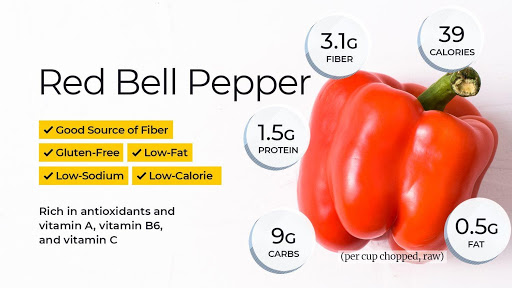
Vitamin C may helps to maintain healthy skin besides boosting your immune system.
Vitamin A is beneficial for your eyes and also good for your skin.
3. Broccoli
It is one of the healthiest vegetables which you can put on your plate. It is enriched with vitamins and minerals. It constitute of Vitamins- A, C, and E , highly fibrous and contains many other antioxidants.
In order to keep its nutrient intact one should cook it as little as possible or may steam it.
4. Garlic
It is famous throughout the world as it adds a good flavor to the food and one must add on to their diet in order to achieve its health benefits.
It is been used for ancient period of time for fighting infections, It may also slow down hardening of the arteries.
It seems to come from a heavy concentration of sulfur-containing compounds, such as allicin thus enriched with immune-boosting properties.
5. Ginger
In ayurveda it is used in both dry and wet form to treat various respiratory ailments like sore throat, Kasa(Cough and cold) etc.
It may help to decrease inflammation, which can help to reduce a sore throat and inflammatory illnesses. It may help in nausea as well.
It may be used in various dishes, desserts, Herbal tea, Ginger Candy etc.
According to some studies Ginger may also decrease chronic pain and even possess cholesterol-lowering properties.
6. Spinach
It is also a healthy choice as it is enriched with vitamin C along with numerous antioxidants and beta carotene. Thus it helps in fighting infection and up rise your immune systems.
It should be consumed like broccoli i.e. it is healthiest when it’s cooked as little as possible so that it retains its nutrients.
This make it easier to absorb the vitamin A content and allows other nutrients to be released from oxalic acid, an anti-nutrient.
7. Yogurt
The Greek yogurt is the best choice. It contains “live and active cultures” . These cultures may stimulate your immune system which in turn to helps to fight diseases.
Instead of flavored Yoghurt or loaded with sugar instead of this one should consume the plain yogurts. You can sweeten plain yogurt yourself with healthy fruits and a drizzle of honey instead.
They may be considered as a great source of Vitamin D, so try to select brands fortified with this vitamin.
Vitamin D helps regulate the immune system and is thought to boost our body’s natural defenses against diseases.
8. Almonds
Almonds are enriched with Vitamin E, which is a powerful antioxidant which in turn helps to strengthen your immune system.
It’s a fat-soluble vitamin i.e. it requires the presence of fat to be absorbed properly.
They are packed with the vitamin and also contains healthy fats.
9. Sunflower seeds
They are full of nutrients like Phosphorous, magnesium, vitamins- B6 and E and also incredibly high in selenium
It is important in regulating and maintaining a healthy immune system and may help in fighting against viral diseases.
Other Similar foods items that are containing high amounts of vitamin E include avocados and dark leafy greens.
10. Turmeric
It is used as a key ingredient in many curries.
It is been used for years as an anti-inflammatory in treating both R.A.(Rheumatoid arthritis) O.A.(Osteoarthritis)
Based on some animal studies, the high concentrations of Curcumin may help to decrease muscle damage(induced by exercise) and boosting up your immune system.
Usage- Take 1/2 spoon of turmeric in a Cup of milk on daily basis.
11. Green tea
They are packed with poweful Antioxidants- flavonoids and epigallocatechin gallate (EGCG)
In some studies, EGCG has been shown to enhance the immune function. The black tea the fermentation process destroys a lot of the EGCG. But on the other hand i.e. Green tea, EGCG is preserved as it is steamed and not fermented.
It is also a good source of the amino acid L-theanine which may aid in the production of germ-fighting compounds present in your T cells.
12. Papaya
It is another fruit loaded with vitamin C. It is good for your digestive system as it is packed with digestive enzyme called papain that has an anti-inflammatory effects.
Constituents- Potassium, magnesium, and folate. They all of which are beneficial to your overall health.
13. Kiwi
It is an amazing and tasty fruit. It is enriched with folate, potassium, vitamin K, and vitamin C.
Vitamin C in turn helps to boost the white blood cells to fight infection, while kiwi’s other nutrients keep the rest of your body functioning properly.
14. Zinc
It is an essential nutrient that people need on daily basis in a moderate amount in order to stay healthy. Zinc is found in cells throughout the body.
Our body also needs zinc to make proteins and DNA, the genetic material in all cells. Also helps to fight against various bacteria and viruses. Some food that are packed with zinc are as follows-
- Lean meats
- Poultry
- Eggs
- Seafood
- Beans
- Peas
- Lentils
- Nuts and seeds
- Soy products.
- Oysters, red meat, and poultry are excellent sources of zinc.
- Baked beans, chickpeas, and nuts (such as cashews and almonds)
Zinc consumption should not be ignored as our bodies need it so that our immune cells can function as intended.
MANAGEMENT OF COVID FEVER ACCORDING TO AYURVEDA
- April 28, 2021
- Posted by Dr. Vaidya Karanvir Singh
- 0 Comment(s)
Ayurveda describes Jwara as the most powerful disease which is capable of affecting the body, mind and the sense organs. Increase in temperature of body and mind (disturbed mind or thoughts) is considered as the main symptom of the disease.
Jwara is a Rasadhatu Pradoshaja disease which affects the Abhyanthara roga marga which includes the kosta or the amashaya and pakvashaya together. Thsese roga are usually treated by langhana and the same is used in the management of Jwara.
Signs and symptoms of COVID-19 reveal that this disease affects the Abhyantar roga marga with fever and respiratory symptoms as the main manifestations. Therefore, the management principles of Jwara can be used in the management of COVID-19 Patients too.
COMPARISION
COVID-19 caused by the SARS-CoV-2 virus has already been spreading so fast and has acquired an epidemic nature. But, Epidemics like COVID-19 are not new to Ayurveda. Our classical textbooks have given a vivid description of such epidemics in the name of ‘Janapadodhwamsa’ where various aspects of such epidemics with respect to their cause (nidana), effects, management and prevention are clearly described.
Charaka samhita has clearly explained that such epidemics appear as a result of vitiation of air, water, environment and season which are common to all individuals. Therefore, such epidemics affect people irrespective of their physical constitution and the strength of affliction depends on level of dosha vitiation of the person.
Pragyaparadha or misuse of one’s intellect is a causative factor for vitiation of all three doshas and it is considered to be the main cause of ‘Janapadodhwamsa’ too. Proper use of medicines to improve the physical health, administration of five elimination or Panchkarma therapies and rasayana, along with Daivavyapasraya chikitsa has been mentioned as preventive and as treatment for diseases leading to Janapadodhwamsa.
This Jwara can also be classified as being agantuja (external) caused by Bhoota Abhishanga (virus), which aggravates all the three doshas. Considering the nature of COVID-19 as agantu and janapadodhwamsa, it can be considered as a type of Sannipata Jwara with fever, tiredness, dry cough, nasal congestion, runny nose, aches and pains, sore throat, diarrhea etc as the main symptoms.
STAGES OF JWARA
CLINICAL FEATURES OF AMA JWARA (1st STAGE)
The ama jwara/first stage of jwara represents itself with the following clinical features
- Anorexia, indigestion, heaviness in the stomach
- Feeling of heaviness in cardiac region, drowsiness and laziness
- Continuous, fever with acute onset.
- Non-elimination of the dosha along with mala or waste products
- Excess salivation, loss of appetite,nausea and tastelessness in the mouth.
- Rigidity, numbness and heaviness of the body
- Excessive urination
- Improper formation of stool
CLINICAL FEATURES OF PACHYAMANA JWARA (2nd STAGE)
- High grade fever and excess thirst
- Delirium
- Dyspnea
- Giddiness
- Excess evacuation of wastes
CLINICAL FEATURES OF NIRAMA JWARA (3rd STAGE)
- Restoration of hunger
- Debility
- Lightness in the body
- Reduced fever
- Elimination of the dosha along with the waste products from the body are the clinical features of nirama jwara (Body is free from ama or toxins or aggravated doshas).
- These features generally appear on the 8th day.
PRECAUTIONS AT INETIAL STAGES OF JWARA
The patient, in the state of nava jwara/first stage fever, should avoid certain things such as
- Daytime sleep
- Bath
- Massage
- Heavy to digest food
- Sexual intercourse
- Anger
- Direct exposure to wind
- Exercise
- kashaya (astringent foods)
CONTRAINDICATION OF LANGHANAM (FASTING)
Langhanam is prescribed in the initial stage of jwara except those caused by
- kshaya consumption
- vata dominant jwara
- fear, anger, passion, grief
- Physical exertion
BENEFITS OF LANGHNAM IN JWARA
- Langhana reduces the aggravated dosha and stimulates the agni(Digestive fire)
- As a result of this jwara subsides and the body becomes light and the person’s appetite is restored to normal
- Langhana should be performed only to an extent where it does not hamper the vitality or strength of the individual.
MANAGEMENT PRINCIPAL OF JWARA
- Langhana (fasting)
- Swedana (fomentation)
- Kala (waiting period of eight days)
- Yavagu (medicated gruels) and tikta rasa(Bitter taste) drugs and all digestive enhancers prescribed in the taruna jwara (the initial stage of jwara)
VARIOUS DRINKS TO MANAGE THIRST IN JWARA
If the patient feels thirsty, he should be given :
- Hot water to drink if the jwara caused by aggravation of vata and kapha
- If the jwara is pitta dominant, water boiled with bitter drugs and then cooled, sgould be is given.
- Both of these are dipana, (digestive fire enhancer), pachana (enhancing digestion), and jwaraghna (alleviators of jwara). They help in cleansing the channels of circulation and promote strength, sweating, appetite and auspiciousness.
SHADANG PANIYA
Boil the water with musta, parpataka, ushira, chandana, udichya and nagara. Once it cools down give it to patient for the alleviation of thirst and jwara.
DECOCTIONS
After six days of light diet, the jwara patient should be administered decoctions, which are either pachana (stimulant of digestion) or shamana (alleviator of doshas).
DECOCTION INDICATED ARE
- Musta and parpataka can be taken either in the form of decoction (pakya) or shita kashaya (crushing and soaking the herbs overnight in water and then filtering the content and using the filtrate in morning).
- Parpataka decoction may be given to the patient along with nagara and duralabha.
- The decoction made from kirata tikta, guduchi, musta and vishva bheshaja.
- The decoction of patha and ushira along with udichya plant.
All these above mentioned decoctions which are used for the treatment of jwara are jwaraghna. They stimulate the digestive fire, help in the pachana of the doshas, relieves thirst, anorexia and treats mukha vairasya (bad taste of the mouth).
CONTRA INDICATIONS OF KASHAYAM
In the first stage of jwara, the astringent tasted drugs or decoctions are prohibited. Because if we give it in 1st stage, Doshas will not undergo paka.
YUSHA (SOUP) INDICATIONSThe patient should be given light diet which includes yusha (soup) prepared from vegetables and pulses and rasa (soup) of the meat of animals inhabiting arid regions, up to the tenth day, to treat the jwara.
INDICATIONS AND CONTRAINDICATIONS OF GHEE
- In case of less aggravated kapha dosha and excess aggravated vata and pitta dosha, and in patients with pakwa dosha stage or no ama, ghee should be given. It is like amrita (nectar) for them.
- If the kapha dosha isl predominant even after 10th day and if the signs and symptoms of langhana have not appeared, then ghee is contra indicated. In such cases decoctions should be administered til body becomes light.
- The patient should be given light diet along with the meat soup of wild animals and birds. This will kill the strength of the doshas and enhances the strength of the body.
MILK
A patient should be given milk in nirama stage in the body
- When the patient has excessive burning sensation and thirst
- If vata and pitta dosha are dominant
HOT WATER
If fever patient feels thirsty, Hot water should be given to drink depending upon the doshas involved and the strength of the patient.
VARIOUS DIETARY FOODS USED IN JWARA
For this purpose, rakta shali, shashtika shali, specially purana shali (preserved for over a year) rice are the best. These should be given in the form of yavagu (gruel), odana (boiled rice), laja (fried paddy) to decrease the fever of the patient.
TEN TYPES OF YAVAGU USED IN TREATMENT OF JWARA
- The peya prepared with laja (fried paddy) and boiled with pippali and nagara is light to digest. It should be given to the patient in the beginning of the jwara as the digestive fire is reduced.
- If there is movement of bowel and the patient is desiring sour foods, then this peya should be made sour by adding dadima and should be given with nagara.
- Once this peya is cooled, add honey before giving it to paittika type of patient.
- A patient suffering from shoola (pain) in the parshva (flanks), basti (urinary bladder) and shira (head) regions should be given peya prepared from red variety of shali rice by boiling it with shvadamshtra and kantakari as this alleviates jwara.
- A patient suffering from jwaratisara (fever associated with diarrhea) should be given peya which is sour and is boiled with prishniparni, bala, bilva, nagara, utpala and dhanyaka.
- If jwara is associated with kasa (bronchitis), shwasa (difficulty in breathing) and hikka (hiccups), then give yavagu which is prepared by boiling with the group of drugs belonging to vidarigandhadi gana, as it will acts as a stimulant of digestive fire and promotes sweating.
- Patient suffering from jwara associated with koshthabaddhata(constipation) should be given Peya prepared of yava (barley) boiled with pippali and amalaki. It causes anulomana (downward movement) of dosha.
- Mix this peya with ghee and give it to the patient suffering from jwara with constipation.
- Jwara associated with constipation and pain – Peya prepared by boiling with mridvika, pippali mula, chavya, amalaka and nagara should be consumed.
- Patient suffering from Absence of sweating, sleeplessness and thirst – Peya prepared by boiling with nagara and amalaka fried with ghee and mixed with sugar.
BENEFITS OF GHEE CONSUMPTION
If in a person of ununctuous disposition or snigdha sharer, jwara doesn’t get cured by the use of decoctions, emesis, fasting and by light diet, then medicated ghrita should be given to him by adding it with the decoctions.
MANAGEMENT OF SANNIPATAJ JWARA
Langhanam and all the above mentioned therapies are administered in the following conditions
- When the jwara is in the sama(dosha are still inaggravated form with indigestion) stage
- When jwara is produced by the aggravated kapha dosha
- When both the kapha and the pitta dosha are aggravated together
- Vamana, virechana and bastī therapies should be administered to cure the jwara caused by the aggravated vāta, pitta and kapha dosha respectively.
- In the case of saṁsṛṡṭra and sannīpātaja (combination of two or all the three doshas) type of jwara, the lesser, greater or equal status of the vitiated doshas should be found out and the treatment should be planned according to that dosha and specific drugs assigned for the particular dosha should be given.
- Sannipātaja jwara should be treated by increasing one dosha, reducing the excessively aggravated one or by correcting the sites of the doshas in order, beginning with the site of kapha.
MANAGEMENT OF JEERNA JWARA
When the fever turns into chronic stage and there is weakness in the the body, such patients should be given nourishing foods which promote the strength of the body.
MANAGEMENT OF JWARA LOCATED IN VARIOUS DHATUS
- RASA DHATU – Vamana and upavāsa (emesis and fasting) should be done.
- RAKTA DHATU – Seka and pradeha (pouring of hot medicated liquids and Medicated paste application) should be done.
- MAMSA AND MEDAS – Virecana and upavāsa should be done.
- ASTHI AND MAJJA DHATU – Nirūha and anuvāsana bastīs should be given.
SIGNS OF COMPLETELY CURED JWARA
- Disappearance of klama (mental fatigue) and santapa (temperature or fever)
- Absence of pain in body parts
- Clarity of senses or clear thoughts
- Gaining natural mental faculties
PRECAUTIONS AFTER BEING CURED FROM JWARA
A person suffering from jwara and the person who has just become free from it (do not have fever anymore)
- Should not consume food and drinks which are vidahi (causing burning sensation), guru (heavy to digest), asatmya (unwholesome diet) and viruddha (mutually contradictory)
- Should avoid sexual intercourse, work that causes excessive exhaustion.
- Exercise, bathing, chankramana (brisk walking) should be avoided by the person who is now free from fevera till he regains his strength back.
- By following these rules fever gets alleviated and does not occur again.
Chandigarh Ayurved Centre has manufractured a Kit for COVID-19 Prevention, which contains formulations like : Trikatu syrup, Amrit tulasi ras, giloy capsules, garlic capsules.
All these helps in digestion of AMA which causes the fever.
Corona Virus Prevention Kit
Migraine (Ardhavbhedak)
- April 28, 2021
- Posted by Dr. Vaidya Karanvir Singh
- 0 Comment(s)
Migraine can cause extreme pulsating torment or a beating sensation, for the most part on one side of the head. It’s regularly joined by sickness, heaving, and outrageous affectability to light and sound. Headache assaults can keep going for quite a long time to days and the agony can be serious to such an extent that it meddles with your every day exercises.
Migraine is called as Ardhavbhedak in Ayurveda. In Ardhavbhedak there is cutting and agitating agony in portion of the locale of head, cervical area, eyebrows, fleeting part , ears, eyes, and front facing head which is a lot of like Migraine. As indicated by Acharya Charaka had referenced that vitiated Vata/Vata – Kapha are associated with indication of Ardhavabhedaka.
Samprapti of Ardhavabhedka
NIDAN
↓
1.Aharaj 2.Viharaja 3.Mansika 4.Agantuja
↓
Vitiation of tridosha
↓
Enters siras of shiras
↓
Vitiates the rakta
↓
Gets lodged in ardha shiras
↓
Ardhavbhedaka
Types of Migraines
There are a few sorts of headaches, and a similar kind may pass by various names:
Migraine with aura (complicated migraine): Around 15% to 20% of individuals with headache migraines experience an air.
Migraine without aura (common migraine): This kind of headache cerebral pain strikes without the notice a quality may give you. The indications are something similar, yet that stage doesn’t occur.
Migraine without head pain: “Quiet headache” or “acephalgic headache,” as this sort is otherwise called, incorporates the atmosphere indication however not the cerebral pain that ordinarily follows.
Causes of Migraine
Dietary causes;
- Excessive admission of Ruksha Bhojana (Dry and Coarse food)
- Adhyashan (Excessive admission of feast or eating during heartburn)
- Skipping suppers/Fasting/Hunger
- Atiambupana (Excessive admission of water)
- Atimadyapana (Excessive admission of liquor).
Habitual and word related causes;
- Affliction with Pragavata (Easterly wind)
- Due to inordinate openness to ice
- Weather changes, High height, Barometric pressing factor changes
- Suppression of the common inclinations extraordinarily of Mutravega, Purishavega, Kshavathuvega and Nidravega.
- Ayasa (Excessive exercise or Fatigue)
- Changes in rest designs as Diva Swapna (day resting) subsequent to taking feast or Ratrijagarana (overnight arousing)
- Atimaithuna (excesive copulation)
- Atibhasya (over talking)
- Excessive Exposure to Sun beams or splendid light
- Asatmyagandha (Bad scent)
- Staying in unhygienic conditions.
- Hormonal (Menstrual cycle vacillations, oral contraceptives pills and so forth)
Symptoms of migraines
- Slicing and agitating torment down the middle of the locale of Manya (cervical locale) Bhru (Eye temples), Shankha
- (Transient district), Karna (Ears), Akshi (Eyes) and Lalata (Frontal head).
- Tearing and pounding power of torment with Bhrama (Vertigo/disarray).
- The infection grows either at the time frame fortnight 15 days or 10 days or on the other hand a month and dies down of its own accord.
- Shankhamoola Darana (Tearing agony in transient locales), Gandashotha (Swelling over Zygomatic territory) and Chakshu-Virajyata (Redness of Eyes).
- Ardhashirsha Vikara is raised with the ascent of Sun.
- If the illness goes on for cutting edge, it might obliterate the sight and the consultation.
- Affectability to light, clamor and scents.
- Queasiness and regurgitating steamed stomach and stomach torment.
- Loss of craving.
- Feeling warm (perspiring) or cold (chills).
- Fair skin tone (paleness).
- Feeling tired.
- Wooziness and obscured vision.
- Delicate scalp.
- Looseness of the bowels (uncommon).
- Fever (uncommon).
Treatment of Migraine
Nidana Parivarjana (Avoidance of Causative Components)
Nidana Parivarjana is the first and most helpful technique in the anticipation and the board of Ardhavabhedaka. The factors which are known to create Ardhavabhedaka ought to be stayed away from.
Aushadh chikitsa (Medicine treatment)
In this both panchkarma chikitsa and oral drug in type of shaman chikitsa is shown. Under panchkarma some Shodhana Karmas (for extremist expulsion of causative dismal components of the sickness from the body) and a few different strategies (for moment alleviation by utilizing particular strategies) are demonstrated.
Panchkarma Procedures
- Shirolepa (Head mask) – Kumkuma Ghrita lepa, Sarivadi lepa.
Different medications for shirolepa are;
1) Process dark pepper powder with bhringraja swarasa and keep it in a jug subsequent to drying. Use with bhringraja swarasa during assault.
2) Black tila, jatamansi powder blended in with saindhava furthermore, nectar.
- Shiro-Abhyanga (Massage over Head)- with Dashmoola Taila, Mahamayura Ghrita, Prapondrikadi Taila.
- Shirovirechana Karma (Nasya procedure)
In the Nasya Karma treatment the medication is directed through nostrils. Medications utilized for this reason incorporate oils, arranged with drugs as powder juice or glue of the medications which may have aggravation impact on nasal mucosa. Nasyakarma should be possible for 7-21 days as per seriousness and chronicity of the illness. Arrangements utilized in Shirovirechana Karma are:
Taila/Ghrita – Shadabindu Taila, Anu Taila, Dashmoola Taila, Gunja Taila, Goghrita, Devadarvadi Ghrita, Lakshadi taila, Kumkumadi Ghrita
THE LACTATING MOTHER- DO’S AND DON’TS
- April 28, 2021
- Posted by Dr. Vaidya Karanvir Singh
- 0 Comment(s)
Are you a new mother??Searching for some proven tips on breastfeeding??
GENERAL DESCRIPTION-
Lactation- It is best described as the secretion of milk from the mammary glands or the period of time in which the mother lactates to feed her baby.
This is a natural process with all post-pregnancy female mammals.
In humans this process of feeding milk is known as breastfeeding or nursing.
It should not be avoided as itis a natural phenomenon, which benefits both the mother as well as child.
There are many advantages of the mother’s milk in the ancient scriptures.
It is a best method to give the love to the child. A child understands the mother by one means i.e. breast-feeding.
- According toAyurveda breast milk is known as a nectar. It is considered as the knowledge pots for the child.
Some facts about the lactation supports this comparison-
- The Mother’s milk is naturally sterile and it protects the baby from many infections and diseases.
- It is always available at right temperature, suitable for the child.
- Mother’s milk contains- IgA ad lectoferrin, which is not available in such a high concentration if compared to any other milk. It helps to enhance immunity of the child against a variety of bacteria and thus protecting the infant from many diseases.
- The various digestive enzymes that is present in human milk make it more suitable and easily digestible for the baby.
- Milk lactose present in the milk inhibits growth of E. coli, and poliovirus, thus protecting the baby.
AYURVEDA AND BREASTFEEDING-
According to Ayurveda,breast-milk is Upadhatu of Rasadhatu and is directly influenced by the quality of Rasadhatu is produced by the food we eat.
That is why the mother’s diet is responsible for any health problems in the child.
Assessment of the quality of milk-
1. Take a drop of milk fall into a container of water and if it disperses then the milk is of good quality
2. If the milk Sinks-Heavy with Kapha (hence, Kapha provoking items have to be removed from the diet)
3. If the milk floats- Due to airy Vata (the child will pass gaseous stools and suffer from gripes).
Intake of Ayurvedic Formulation Dashmoolarishta will help in this case.
4. Yellowish tinge of the milk- This is because of Excessive Pitta.
Shatavari is the best herb in this case that should be given to the mother.
Useful Tips for lactating mother-
- For scanty breast milk-Try the mixture of almond milk and herbs.
- Soak 10 almonds in water for overnight. Then peel them, put them in a blender, add a cup of hot milk and puree them.
- Pour the almond milk into a glass and stir in a pinch each of ginger powder, cardamom and saffron and a teaspoon of date sugar (available in most health food stores) or honey. Drink it two times a day i.e., morning and evening, to help strengthen the quality and quantity of your breast milk.
- Women with pitta or kaphadoshas drink 3-4cups of pomegranate juice (available in most health food stores) daily to regulate lactation.Vata constitution women should avoid pomegranate juice as Vatadosha can get aggravated.
- Shatavari Kalpa – It is a formulation very useful as ‘galactagogue’ for mothers after delivery. Using it on regular basis is very helpful in maintaining quality and quantity of milk.Powder of Shatavari should be taken in the dose of 1 GM daily along with milk to maintain the quality of lactation.
- Other Formulations of Shatavari and Ashwagandha -ShatavariGhrita, AshvagandhadiChurna, etc., can also be taken for maintaining the quality as well as quantity of milk.
- For the cases of cracked nipple, local application of ‘ShatadhoutaGhrita’ on the affected nipple is very useful.
PATHYA OR THINGS TO BE DONE??
- The best diet for lactating mother should be simple and vegetarian diet.
- Ghee and oils- Take these in adequate amount in order to subdue the vitiated VataDosha, nourishing of the traumatized tissues and improve digestion, facilitate the evacuation of bowels.
- Start breastfeeding your baby immediately right after he/she is born.
- Colostrum is the breastmilk produced during the first 2-3 days post-delivery. It is highly nutritious, provides protection and also sufficient for the baby.
- In case of more milk secretion- Extra milk should be squeezed and discarded. If not discarded then there are chances of breast abscess due to congestion caused by extra milk.
- Breast Feeding time should be after every two hours. Keep on trying even if the flow of the breastmilk appears to be slow or completely blocked.
- Semi solid food should be started from the age of 4th month even if there is profuse milk secretion.
- Exclusive Breast feeding- Give your baby only breastmilk till the he/she is 6 months old.
- According to Ayurveda at 6monthAnnaprashan Samskara is done i.e., the first food item given to the child and it should be semi solid paste of well-cooked rice with sugar and cardamom.
- Breast-feeding should be done till the age of 1year and then gradually stopped and replaced by the regular solid food.
- The baby should be with the mother in the same bed. This is called ‘bedding -in’.
- After taking a nice warm bath breastfeed your baby as it helps to improve the milk flow.
- One should never delay or be punctual at the baby’s feeding time i.e.,even if your baby is not crying you should proceed as per the schedule for the feeding. it helps a lot in a long run.
- Crying indicates the last and final sign of hunger. Other indications are your baby starts to push out his/her tongue; lick his/ her lips; bring his/her hand near the mouth and licks it; or opens the mouth in left and right directions.
- Some studies have revealed that newborn babies take the feed better when they are wearing a clean and dry diaper i.e., they are more comfortable. It is advised to change the diaper before starting the feed.
- Keep yourself and your baby clean- It is advisable to wash your hands and wipe the breast region with a damp cloth before and after each breast-feeding session. Sometimes baby’s health issues may be due to carelessness on your part.
- Drink plenty of water– drink a glass of water, juice or any healthy hydrating fluid before breastfeeding as it increases your milk flow.
- Instead of leaving your baby with a nanny and formula milk, your baby could always use the breast milk in bottle
- Highly fibrous diet and healthy diet which include all sorts of proteins and vitamins should be followed in order to avoid constipation or gas in your baby’s stomach.
- Drink milk regularly, less spicy diet as your breast milk may have slight taste of the food you eat. Your babies can also sense flavor and may dislike it.
- One should learn the holding position before discharge from the maternity home. One should also learn how to store and express breast milk.
APATHYA OR NOT TO FOLLOW-
The milk secretion may decrease by the regular intake of the canned foods, hot, pungent, and spicy food recipes and it should be avoided.
- The infection to the mother during lactation period can be easily transferred to the child so the exposure to polluted and infectious climatic conditions should be avoided.
- Medication- Be Careful while taking drugs during lactation, since many drugs are excreted through the milk and might exert an adverse effect on the baby.
- In the cases of breast abscess, when the milk is infected Breast-feeding should be stopped. Further squeezed out the milk and discard it to avoid further congestion.
- If you are experiencing pain or sore nipples- Consult a doctor regarding your problem and ask him/ her about the right ointment for your nipples, and meanwhile use a breast-shield.
- Avoid eating any painkillers or medicine unless your doctor prescribes it
- Your mood plays an important role in this process. Breastfeeding should be avoided when you are feeling angry or depressed. This is one of the most important tips that should not be ignored. The baby can sense low mood of the mother and this can directly impact your milk flow.
- No Pre-lacteal feeds i.e. Don’t give glucose, jaggery, sugar, plain water or honey before the first breastfeed.
- Do not give your baby gripe water, balkadu, glucose water or tonics for teething.
- Never get too impressed with the convenience of any bottle-feeding mom or avoid bottle milk.
- Avoid spicy food or strong flavored food items as it may affect the breast milk.


